MORE TO MUNCH ON Snack options span dayparts and forms

SEAFOOD DIET

Consumers consider sustainability, health and convenience





HERE’S TO SUMMER Beer and wine help usher in a successful season for grocers

IN COLORADO, KROGER SHOWCASES RESILIENCY
May 2023 Volume 102, Number 5 www.progressivegrocer.com 90th ANNUAL REPORT PLUS THE PG 100 12 imperatives for grocers looking to thrive in an era of change BROUGHT TO YOU BY
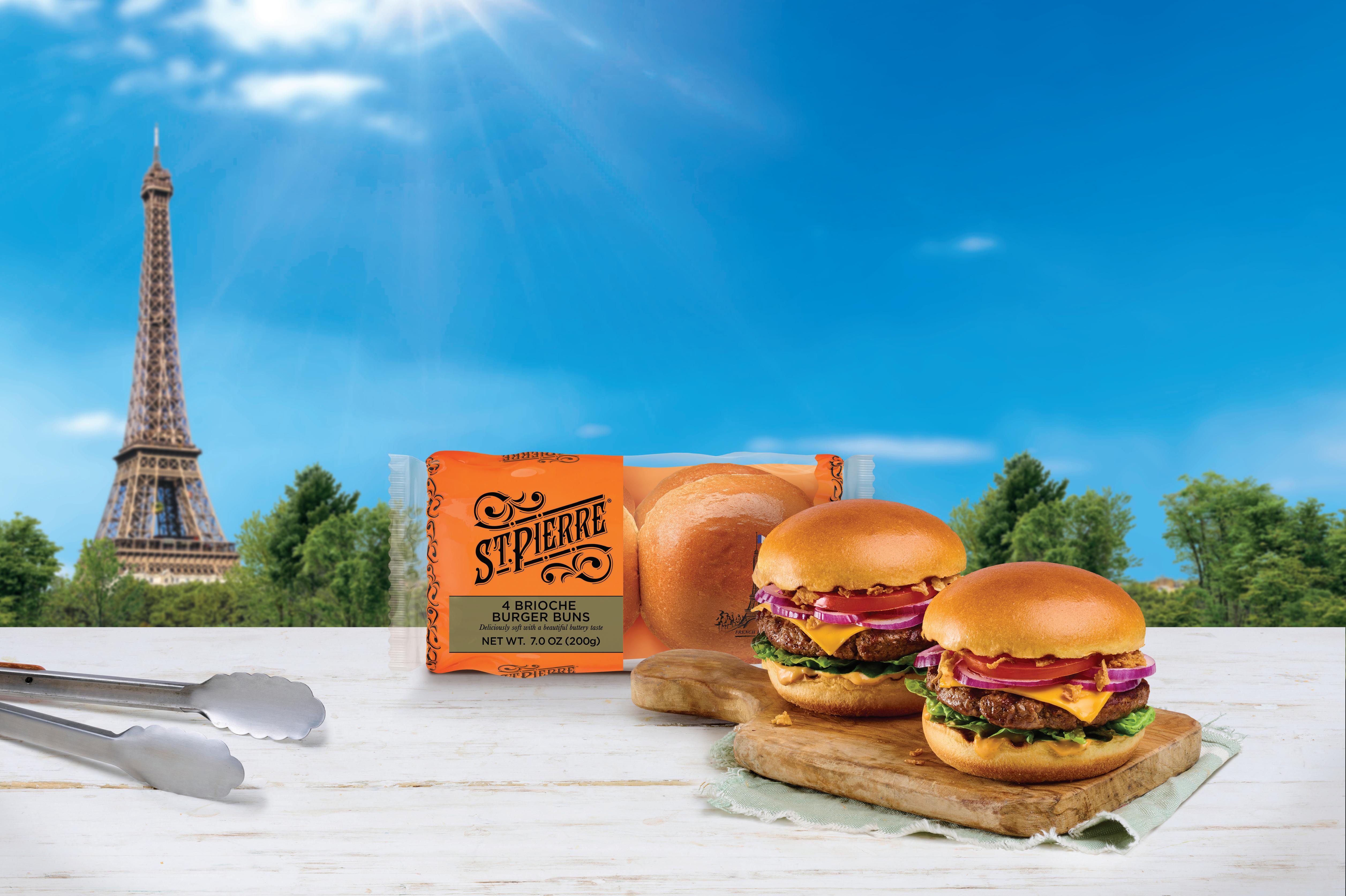



�ETRADE.COM


















e q u i s i t e SaratogaWater.com | | Weekdays Reach u y u Bluetriton B ands Rep esen a ive au h ized supplie day! ©
















Contact your GOYA® representative or email salesinfo@goya.com | trade.goya.com ©2023 Goya Foods, Inc. Learn More! A Unique Caribbean Drink. Your shoppers will love the bold, authentic flavor of GOYA® Jamaican Style Ginger Beer. Its spicy kick and refreshing fizz will awaken your shoppers’ taste buds - introducing them to a new favorite beverage. Bold. Spicy. Authentic.



Contents 05.23 Volume 102 Issue 5 12 NIELSEN’S SHELF STOPPERS Fresh Seafood 13 MINTEL GLOBAL NEW PRODUCTS Nonchocolate Confectionery 14 ALL’S WELLNESS Leading Customers to Functional Foods Departments 67 EDITORS’ PICKS FOR INNOVATIVE PRODUCTS 68 AHEAD OF WHAT’S NEXT Making the Most of Multicultural Marketing 6 EDITOR’S NOTE How to Make Your Stores Safer 8 IN-STORE EVENTS CALENDAR July 2023 4 progressivegrocer.com COVER STORY Crossroads In its 90th Annual Report, PG offers 12 imperatives for grocers looking to thrive in an era of change. 16 37
Table Mesa King Soopers, in Boulder, Colo., has triumphantly reopened after a tragic in-store shooting in 2021, thanks to parent company Kroger's focus on uplifting the communities it serves.
37 RETAILER DEEP DIVE Resiliency in Action
In Colorado, Kroger drives growth by uplifting a community.
48 SOLUTIONS
Current Considerations
Consumers weigh sustainability, health and convenience when purchasing seafood, while plantbased products make a play for their piece of the fish pie.

53 FRESH FOOD
Building the Perfect Produce Department
UNFI’s Dorn Wenninger offers advice on making this key store department an irresistible lure for customers.
57 BEVERAGES
Summer Beer and Wine Review
Learn how best to market and merchandise new drink offerings for retail success.

8550 W. Bryn Mawr Ave. Ste. 200, Chicago, IL 60631 Phone: 773-992-4450 Fax: 773-992-4455 www.ensembleiq.com
BRAND MANAGEMENT
VICE PRESIDENT & GROUP BRAND DIRECTOR
Paula Lashinsky 917-446-4117 plashinsky@ensembleiq.com
EDITORIAL
EDITOR-IN-CHIEF Gina Acosta gacosta@ensembleiq.com
MANAGING EDITOR Bridget Goldschmidt bgoldschmidt@ensembleiq.com
SENIOR DIGITAL & TECHNOLOGY EDITOR Marian Zboraj mzboraj@ensembleiq.com
SENIOR EDITOR Lynn Petrak lpetrak@ensembleiq.com
MULTIMEDIA EDITOR Emily Crowe ecrowe@ensembleiq.com
CONTRIBUTING EDITORS
Mike Duff and Jenny McTaggart
ADVERTISING SALES & BUSINESS
ASSOCIATE PUBLISHER, REGIONAL SALES MANAGER (INTERNATIONAL, SOUTHWEST, MI)
Tammy Rokowski 248-514-9500 trokowski@ensembleiq.com
REGIONAL SALE MANGER Theresa Kossack (MIDWEST, GA, FL) 214-226-6468 tkossack@ensembleiq.com
REGIONAL SALES MANAGER (EAST COAST)
Dave Cappelli 312-505-3385 dcappelli@ensembleiq.com
BUSINESS DEVELOPMENT MANAGER
Lou Meszoros 203-610-2807 lmeszoros@ensembleiq.com
ACCOUNT EXECUTIVE/CLASSIFIED ADVERTISING Terry Kanganis 201-855-7615 • Fax: 201-855-7373 tkanganis@ensembleiq.com
CLASSIFIED PRODUCTION MANAGER Mary Beth Medley 856-809-0050 marybeth@marybethmedley.com
PROJECT MANAGEMENT/PRODUCTION/ART
SENIOR CREATIVE DIRECTOR Colette Magliaro cmagliaro@ensembleiq.com
ART DIRECTOR Bill Antkowiak bantkowiak@ensembleiq.com
ADVERTISING/PRODUCTION MANAGER Jackie Batson 224-632-8183 jbatson@ensembleiq.com
MARKETING MANAGER Rebecca Welsby rwelsby@ensembleiq.com
SUBSCRIPTION SERVICES
LIST RENTAL mbriganti@anteriad.com
SUBSCRIPTION QUESTIONS contact@progressivegrocer.com
60 EQUIPMENT & DESIGN
Leading the Charge
Food retailers are in the forefront of companies expanding the network of charging stations for electric vehicles.

63 TECHNOLOGY
Greater Expectations
Self-checkout is evolving to make the process as seamless as possible for customers and retailers alike.

CORPORATE OFFICERS
CHIEF EXECUTIVE OFFICER Jennifer Litterick
CHIEF FINANCIAL OFFICER Jane Volland
CHIEF OPERATING OFFICER Derek Estey
CHIEF PEOPLE OFFICER Ann Jadown
CHIEF STRATEGY OFFICER Joe Territo
PROGRESSIVE GROCER (ISSN 0033-0787, USPS 920-600) is published monthly by EnsembleIQ, 8550 W. Bryn Mawr Ave. Ste. 200, Chicago, IL 60631. Single copy price $14, except selected special issues. Foreign single copy price $16, except selected special issues. Subscription: $125 a year; $230 for a two year supscription; Canada/Mexico $150 for a one year supscription; $270 for a two year supscription (Canada Post Publications Mail Agreement No. 40031729. Foreign $170 a one year supscrption; $325 for a two year supscription (call for air mail rates). Digital Subscription: $87 one year supscription; $161 two year supscription. Periodicals postage paid at Chicago, IL 60631 and additional mailing offices. Printed in USA.
POSTMASTER: Send all address changes to brand, 8550 W. Bryn Mawr Ave. Ste. 200, Chicago, IL 60631. Copyright ©2023 EnsembleIQ All rights reserved, including the rights to reproduce in whole or in part. All letters to the editors of this magazine will be treated as having been submitted for publication. The magazine reserves the right to edit and abridge them. The publication is available in microform from University Microfilms International, 300 North Zeeb Road, Ann Arbor, MI 48106. The contents of this publication may not be reproduced in whole or in part without the consent of the publisher. The publisher is not responsible for product claims and representations.
48 PROGRESSIVE GROCER May 2023 5
By Gina Acosta
How to Make Your Stores Safer
HERE’S FIVE IMPORTANT TIPS FOR ASSET PROTECTION IN GROCERY.

s you will read in Progressive Grocer’s 90th Annual Report, food retailers operating in North America today face a slew of hard challenges, from labor shortages to skyrocketing costs to dwindling profit margins. But there’s another challenge lurking in the shadows, and it isn’t being talked about enough in the industry: asset protection.
At the 2023 Retail Industry Leaders Association (RILA) Asset Protection Conference this month in Denver, retailers such as Kroger, Walmart, Target, Dollar Tree and many others detailed incidents of e-commerce fraud, violence against store workers, self-checkout fraud, habitual criminal offenders taking advantage of an overtaxed and under-resourced criminal justice system, rising organized retail crime losses, shrink numbers trending up, civil unrest, active-shooter events, persistent unlawful activity on store property, and more events disrupting operations in profound ways. Session after session, grocery retailers said that the No. 1 threat to their business is asset protection.
A law enforcement official from New York City reported that retail theft has jumped 77% over the past five years. The CEO of Ulta Beauty said that his stores have seen a 50% increase in violent incidents in the past six months. On the grocery front, Kroger’s director of asset protection, Chris Harris, discussed how the expiration of expanded SNAP benefits is going to lead to possibly even more incidents or threats.
“In March, the extra government push for SNAP benefits ran out,” Harris noted, “and that means the average individual has roughly $85 less in grocery spend every month. For a family of four, that’s more than $300 less that they’re going to have to spend on groceries. Now, they’re still going to buy groceries, but not as much. So, if sales go down, that’s going to put more pressure on shrink. … Plus there’s the uptick in organized retail crime, in theft activity, there’s the decriminalization of minor shoplifting cases. All of that adds complexity, and these are the things that we’re concerned about.”
Ahead of the Pack
Harris gave three reasons that Kroger has been at the forefront of experimenting with asset protection technology, deploying a number of artificial-intelligence, machine-learning and biometric solutions to help identify and prevent losses via what it now calls its “asset protection ecosystem platform.”
“First, we’re a total-loss organization, so if it’s a loss, we’re involved,” Harris said. “It could be ordering, buying practices, whatever – we’re involved. It has been VP of Asset Protection Mike Lamb’s personal mission to improve the technology for reducing shrink at Kroger. Second, Kroger is large. If you think of how much human capital we would need to accomplish what we can do with technology, there would be no ROI. And third, our CEO, the highest levels of leadership, embrace it. Sometimes you have
to convince them, you have to educate them, you have to show them the benefits of the technology. But without that, you’re going to run into roadblocks. So, really, those three things at Kroger I think continue to drive us forward from a technological standpoint.”
In addition to leveraging emerging technologies, other leaders at the RILA conference had the following advice for retailers facing increased threats, theft and other loss incidents:
Call in everything. Even if the police don’t show up, encourage your store employees to report every incident to law enforcement so there’s a paper trail.
Consider taking a stand or speaking out on regulatory and legal issues related to decriminalization of petty theft and other crimes.
Build relationships with law enforcement and the local community via meet-and-greet events. Keep a dialog flowing to build respect and empathy.
Create technology bridges with law enforcement to track and identify habitual offenders who hit the same stores over and over.
Consider participating in diversion and restorative-justice programs with minor offenders.
Gina Acosta Editor-In-Chief gacosta@ensembleiq.com
6 progressivegrocer.com EDITOR’S NOTE
By Joe Toscano, Vice President, Trade & Industry Development at Purina
S uppor ti ng U S troops has alw ay s been p art of Purina Dog Chow’s hi s tory since it s fo unding nearly a century a go. B u t in 2018, when Dog Chow saw a cri ti c al, life-changing need that w as not being f ully a ddress ed for veter ans, it s newes t mi ssion bec ame clear.

Approximately 3. 5 million milit ary veter ans su ffer from Pos t-Tr aumati c Stress Di s order (PTSD), and it c an have dev as t ati ng effect s on their f amilies, wor k , and interper s onal lives. Thank f ully, s ervice dog s c an redu ce the s everity of PTSD s ymptoms and suicidal behavior s for thes e veter ans. Yet, even with evidence-b as ed result s, du e to the co s t and ti me it t akes to tr ain a s ervice dog, only 1% of tho s e in need who s eek a s ervice dog receive one ea ch year.
Dog Chow s et o u t on a mi ssion to help change that, and Service Dog
S alu te w as born .
Since 2018, Dog Chow has donated more than $1 million to s ervice dog org aniz ati ons, suppor ti ng the c are and tr aining of more s ervice dog s for veter ans with PTSD and other po s t-comb at challenges. B u t the mi ssion has only jus t begun

It i s import ant to note that thes e s ervice dog s are not the same as emo ti onal support, ther apy or comp anion dog s. R ather, they are especially tr ained for veter ans, helping their handler perform t asks they c annot otherwi s e perform on their own Thes e specialized sk ill s are, in p art, what make thes e dog s remar kable, b u t al s o r are. It t akes abo u t two year s and approximately
$25,000 to f ully tr ain a s ervice dog and ensure the perfect pla cement for ea ch dog and veter an .
The inve s tment i s l a rge, b u t the imp a ct i s pricele ss. Some of the demon s tr a ted benefit s of PTSD s ervice dog s for veter a n s incl u de red u ced a nxiety a nd s tre ss , improved s leep, improved confidence to ret u rn to wor k or s chool – or even to be in p u blic, a re s tored s en s e of p u rpo s e, a nd more.
Many of thes e changes aren’t s een with the naked eye, which i s why, las t year, Dog Chow launched it s fir s t-ever Vi sible Imp a ct Aw ard, in p artner ship with the A ss ociati on of Service Dog Provider s for Milit ary Veter ans (ASDPMV). The aw ard celebr ated the remar kable imp a ct s ervice dog s have on the daily live s of veter ans experiencing PTSD
and recognize thes e o u t s t anding s ervice dog s and the org aniz ati ons that tr ained them.
Want to join Purina Dog Chow and Purina ass ociates in bringing more aw areness and support to veter an s ervice dog s? A s a ret ailer, yo u c an play a cri ti c al role in a dv ancing aw areness for o ur mi ssion, which i s now highlighted on every b a g of Dog Chow Complete that arrives to ret ail s tores. Yo u c an al s o cont a ct yo ur Purina sales rep to learn more abo u t special Service Dog S alu te in- s tore signa ge, s ocial and digit al ass et s, a ddi ti onal merchandi s e and more to drive a ttenti on for the progr am.
O u r mi ss ion i s n’t over. Will yo u join us?
SUPPLIER PERSPECTIVES PET SPECIALTY SPONSORED CONTENT
When it comes to PTSD service dogs for veterans, the mission is far from over for Dog Chow
Purina tr ademar ks are owned by Société des Produit s Nes tlé S A
Independent Retailer Month
National Blueberry Month
National Hot Dog Month
National Ice Cream Month
National Horseradish Month

National Baked Beans Month
National Watermelon Month
National Grilling Month
1
Blink-182 Day. We didn’t know it was a thing, either, but they’ve got various hits to blast in your stores.
2
I Forgot Day. Use this occasion to advise shoppers to create a list of what they want to buy before they visit the store, either online or with good old pencil and paper.
9 National Don’t Put All Your Eggs in One Omelet Day. Present an in-person or virtual demo on some fast and flavorful omelet ideas that will elevate any meal occasion.
16
It’s Fresh Spinach Day, so feel free to showcase this star of the produce section.

23
Peanut Butter and Chocolate Day. As far as we’re concerned, it’s the perfect combination.

30
Paperback Book Day. Ask your associates and customers to share on your website what they’re currently reading, and gauge interest in forming an ongoing book club.
3 Air Conditioning Appreciation Day. Now’s the time — in this part of the world, anyway — when we really need it.

4 Independence Day. Have your beer, soft-drink, snack, deli/ prepared food and meat offerings ready.

5
National Bikini Day. Perhaps not optimal shopping attire, but on this one day, why not?

6
National Fried Chicken Day. Remind customers to pick up your in-store version for an easy lunch or dinner.

7
Global Forgiveness Day. Your card aisle offers myriad ways to say sorry, and flowers play a key part in many apologies.
8
National Blueberry Day. Provide a comprehensive recipe collection covering all of the ways that home cooks can use this delectable fruit.

10 Teddy Bear Picnic Day. Although this occasion specifically mentions one highly popular stuffed animal, other beloved inanimate childhood companions are more than welcome.
17 Global Hug Your Kids Day. This should be a daily occurrence, of course, but parents should offer an extra squeeze today.
24 National Cousins Day. These built-in besties are always up for anything –including trips to the grocery store.
11 International Essential Oils Day Educate shoppers on what these are and how they can best use them in health-and-wellness applications.
18 Islamic New Year. Help our Moslem friends and neighbors mark the start of Muharram, the month of remembrance, by providing the ingredients for traditional dishes.
25 International Red Shoe Day

12 National Simplicity Day. Highlight nofuss hacks to make mealtime a snack any time of day.

13
Gruntled Workers Day. Leverage this humorous observance to check in with your associates and find out what they enjoy most about their jobs.
14
National Be Nice to Bugs Day. Make shoppers aware of these creepycrawly critters’ paramount place in the ecosystem, which includes the growing of our food.
15
National Give Something Away Day. Direct altruistic customers to store donation bins for canned goods, gently used household items and more.
19 National Barbara Day. Everyone knows at least one. Shout out all who work for or shop with you by offering them a free piece of fruit to snack on.
26 National Aunt and Uncle Day

20 National Pennsylvania Day. Shine the spotlight on the best that the Keystone State has to offer in terms of food and drink.
27 Bagpipe Appreciation Day


21
Take a Monkey to Lunch Day.
If customers can find ones that are available — but not in the store, of course. BTW, photos or it didn’t happen.
28 National Soccer Day. With the popularity of “Ted Lasso” creating even greater buzz around this global sport in the States, lean in on promos featuring MLS stars.
22 Casual Pi Day. Here’s a commemoration of the approximate value of the mathematical constant — and another excuse for pi/ pie puns and promos.
29 National Lipstick Day. Direct those wishing to mark the occasion to the cosmetics aisle.

31 International Lifeguard Appreciation Day. Offer all those who keep swimmers safe a special discount.

S M T W T F S IN-STORE EVENTS Calendar 07.23 8 progressivegrocer.com
July might be national horseradish month, but horseradish is a great way to spice things up all year round! It's a flavorful, piquant condiment for grilling season, but it offers much more!



Passover & Easter


Horseradish root is a staple at both Passover and Easter meals. Horseradish root commonly serves as the maror or bitter herb on the traditional Passover Seder plate.


Pickling Season
We typically see a jump in demand when pickling season comes around. This is because horseradish root can add a touch of spice in addition to the natural tannins helping to keep pickles crispier for longer periods of time.
Fire Cider

Once cold and flu season comes around horseradish becomes a hot commodity because of its immune boosting and sinus clearing abilities. It's a key ingredient in ire Cider and many other health remedies!
Holiday Meals


Horseradish is a unique condiment that is often a big part of holiday celebrations. It pairs great with main course proteins but is also a popular add to sides like deviled eggs and mashed potatoes!

Ask your wholesalers about fresh and spicy horseradish root! www.jrkelly.com 618-344-2910 jrkelly@jrkelly.com





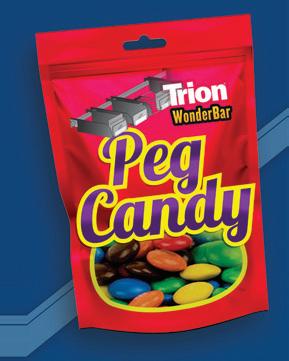


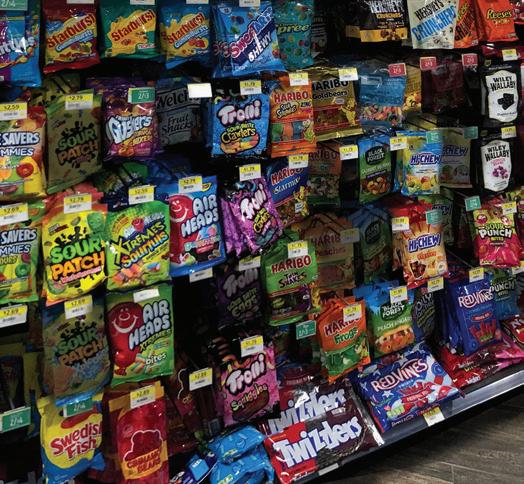
n Increased facings from 70 to 90, a 29% increase*. n Automatically billboards and faces product. n Reduces losses from bag hook tearout. n Cuts over 1 hour/day labor for restocking. n Allows rear restocking and proper date rotation. n Dramatically increases sales in the same space. n Adjusts to accommodate various package widths. * Based upon average 8’ run by 5’ high peg candy gondola installations. Your results may vary. ©2020 Trion Industries, Inc.
Candy Trion Industries, Inc. TrionOnline.com info@triononline.com 800-444-4665 Gain Facings and Cut Labor with WONDERBAR® Tray Merchandising MODERNIZE YOUR MERCHANDISING SELL MORE IN THE SAME SPACETM Ga S S VS AFTER WONDERBAR® 90 FACINGS BEFORE WONDERBAR® 70 FACINGS WonderBar® Tray Merchandising
Sell More Peg





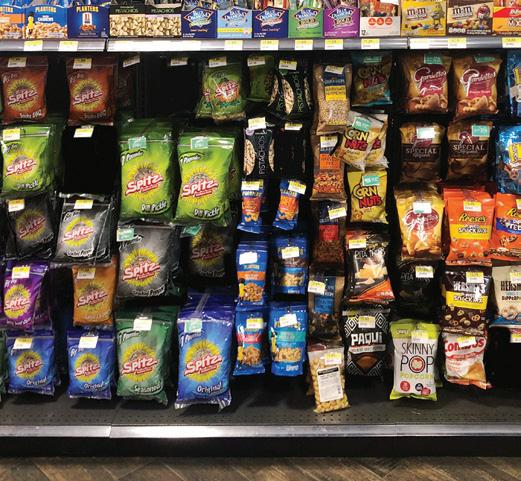
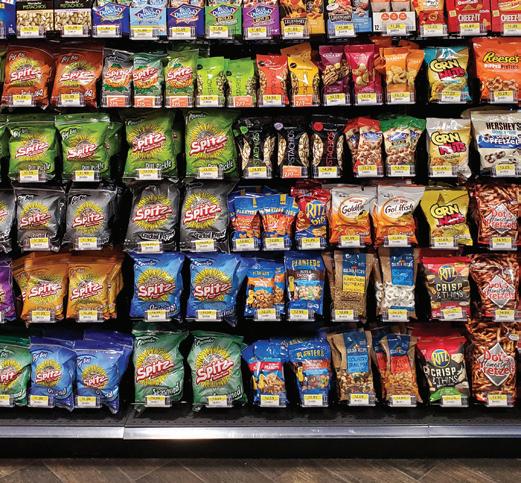

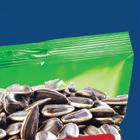

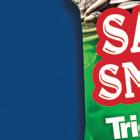







Trion Industries, Inc. TrionOnline.com info@triononline.com 800-444-4665 ■ I e e f f m 99 121, 22% e e*. ■ A m lly ll f e p . ■ Re e l e f m k e . ■ ve 1 / y l f e k . ■ All e e k p pe e . ■ D m lly e e le e me p e. ■ A j mm e v p k e . * B e p ve e 8’ y 5’ l y k l ll . Y e l m y v y. ©2020 T I e , I . Sell More Salty Snacks WonderBar® T y Me VS BEFORE WONDERBAR® 99 FACINGS AFTER WONDERBAR® 121 FACINGS G WONDERBAR® T y Me D NIZ Y U H NDI ING LL IN THE TM G L L

12 progressivegrocer.com FRONT END Shelf Stoppers Fresh Seafood Latest 52 WksW/E 04/01/23 Latest 52 WksW/E 04/01/23 Latest 52 Wks YAW/E 04/02/22 Latest 52 Wks YAW/E 04/02/22 Latest 52 Wks YAW/E 04/03/21 Latest 52 Wks YAW/E 04/03/21 Basket Facts How much is the average American household spending per trip on various fresh seafood items versus the year-ago period? Source: Nielsen, Total U.S. (All outlets combined) — includes grocery stores, drug stores, mass merchandisers, select dollar stores, select warehouse clubs and military commissaries (DeCA) for the 52 weeks ending April 1, 2023 Source: Nielsen Homescan, Total U.S., 52 weeks ending Feb. 25, 2023 Salmon Crab Shrimp Lobster Cod and Scrod Total Department Performance Top Fresh Seafood Categories by Dollar Sales $7,329,521,053 $7,436,056,821 $7,584,883,332 Fresh Seafood Generational Snapshot Which cohort is spending, on average, the most per trip on crab? Millennials $8.59 Gen Xers $8.32 Boomers $8.32 The Greatest Generation $6.73 Source: Nielsen Homescan, Total U.S., 52 weeks ending Feb. 25, 2023 $9.92 on all fresh seafood items, up 1.4% compared with a year ago $8.17 on crab, up 3.1% compared with a year ago $13.82 on cod and scrod, up 21.6% compared with a year ago $11.88 on salmon, up 6.8% compared with a year ago Cross-Merch Candidates Wine Spirits Nuts and Seeds Processed Meat Food Storage Supplies Fully Cooked Meat Coating Mixes and Crumbs Frozen Health and Beauty Care Lighting $3,000,000,000 2,500,000,000 2,000,000,000 1,500,000,000 1,000,000,000 500,000,000 0
Nonchocolate Confectionery
Market Overview
Inflation will inevitably have impacts, but nonchocolate confectionery’s relatively low price point will keep it from significant harm, and even position it for success as consumers look to trade down from more expensive indulgences.
Nonchocolate confection is further insulated from conversations about health and sugar, with snacking and indulging top reasons for purchase. Subsequently, low-sugar offerings remain niche.
Key Issues
Consumers are embracing the versatility that this market has to offer, and they aren’t significantly tied to one type of nonchocolate confectionery, so keeping things interesting with innovation is a natural opportunity to grab attention in a competitive market.
The chewy segment is currently in the lead, highlighting the importance that consumers place on the eating experience.
As potential economic uncertainties challenge innovation, engaging with consumers may be a relatively lowcost solution to create excitement about current offerings on platforms like social media.

Consumers sharpened their sweet tooth in the past two years, pushing sales past $10 billion. The market isn’t expected to slow anytime soon, with sales expected to reach $14.3 billion by 2027.
What Consumers Want, and Why

PROGRESSIVE GROCER May 2023 13 MINTEL CATEGORY INSIGHTS Global New Products Database
FOR MORE INFORMATION, VISIT WWW.MINTEL.COM OR CALL 800-932-0400
will turn to nonchocolate confectionery
it’s
easy
nonchocolate
Nonchocolate’s
Consumers
because
fun, delicious and an
treat, especially when times are stressful. Nostalgia will continue to win in the
confectionery market, with its ability to appeal to consumers in different ways, providing positive reminders of the past.
versatility will continue to shine, with familiarity still a winner. Innovation remains most appealing to younger, more exploratory generations as they gain purchasing power.
ALL’S WELLNESS
By Molly Hembree, MS, RD, LD
Leading Customers to Functional Foods
tretching your grocery dollar can mean taking advantage of every sale, coupon, promo or bulk item, or it can mean making sure your pennies are put to work for you, which includes food that helps your health. Functional foods, which may be referred to as “superfoods,” are loosely understood to mean foods that offer health benefits beyond basic nutrition through physiologically active components. These benefits can include an improved state of health and well-being and/or reduced or minimized risk of certain diseases or health conditions.
Although eating more functional foods may sound like a fancy upgrade to an eating pattern, functional foods are found across your retailer’s in-store or online marketplace. Often, functional foods are easily found and best consumed in their “whole food” minimally processed form. However, functional foods also expand into the fortified, enriched or enhanced food category, as these additives to food can improve the benefit of the product.
Following are four key grocery departments where you can direct your customers to find functional foods.
Produce
If there are any obvious products with health-related functions at the grocery store, they’re lurking in the produce department. Fruits and vegetables have a natural built-in ability to protect our health now and in the future, namely through phytonutrients (plant compounds that strengthen our own defenses and help our bodies perform at their best), vitamins and minerals. Keep your shoppers engaged with this department by stocking bright and cheerful produce from wall to wall, offering steamer bags of various curated vegetable and seasoning mixes, and cross-merchandising kitchen gadgets like vegetable spiralizers and strawberry hullers. Be sure to have markdown bins with “just about to expire” produce so your store can still make profit and customers can still make banana bread.
Plant-Based Proteins
The current default when we hear plant-based proteins is to picture meat substitutes or “analogs.” Consider “beefing” up these sales, however, by advocating for classic plant proteins: tofu; beans; peas (like split peas, chickpeas or black-eyed peas); lentils; tempeh; and even soy-based dairy items. Lean on your in-store culinary staff to find ways to use these ingredients alongside animal-based main courses, or even to create vegetarian dishes for your hot bar that target plant-based patrons. Some customers could be hesitant to throw affordable lentils or tofu in their carts, but accompanying these items with recipe cards that take the guesswork out of
how to prepare and enjoy them at mealtime should dispel any confusion.
Beverages
Whether drinks are fruity, bubbly, creamy, fermented or flat, how we sip can have a big impact on our health. Thanks to drinks like orange juice with added calcium, kombucha made with fermented tea, shakes with added protein, or seltzer waters with probiotics, the beverage area has no shortage of functional items. Try to offer many popular beverages in both single-serve and jug-size options so customers can try them first and then commit to a bigger size on the next shopping trip. Or you can offer discounts on stacking different products: A medley of various functional beverages can come with a better price tag than one purchased separately. Consider having an additional refrigerated beverage case near fresh readyto-eat meals so that grabbing these drinks is a no-brainer for on-the-go shoppers.
Snacks
We shouldn’t get ahead of ourselves with the idea that the entire snack aisle now boasts a health halo. However, terrific go-to snacks with functional effects include air-popped popcorn or popcorn kernels, nuts, seeds, or dried fruit. Keeping with the theme of turning to “whole foods” first, find ways to promote the VIPs of this section. Set up a trail mix station with clear glass jars to display tasty combos like almonds + dried cranberries + sunflower seeds, or cashews + popcorn + pistachios. Make digital or print infographics to guide customers on what to do with various seeds: For instance, did you know chia seeds make a great pudding, sunflower seeds can be made into seed butter, or pumpkin seeds can be crushed for a perfect protein coating? Be your customers’ trusted source of food inspiration.
Functional foods are already tucked among many of the common offerings on store shelves. Encourage your shoppers to explore functional foods, particularly in the produce, plant-based protein, beverage and snack aisles, to increase basket size.

14 progressivegrocer.com
THESE HIGHLY NUTRITIOUS PRODUCTS AREN’T FOUND ONLY IN THE STORE PERIMETER.
Functional foods are already tucked among many of the common offerings on store shelves.
Molly Hembree, MS, RD, LD, is a registered dietitian for Kroger Health.



















Consistent flame height Resistance to elevated temperature Drop-resistant from a height of 5 feet Flame extinguishes within 2 seconds Safe volumetric displacement * ARE YOU PLAYING WITH FIRE? SELLING GENERIC LIGHTERS COULD PUT YOU AT RISK. Not a BIC® Lighter Longest-Lasting Lighter merica’s Safest and © 2023 BIC USA Inc., Shelton, CT 06484 *vs. fixed-flame, non-refillable lighters of comparable size BIC.® SAFETY YOU CAN COUNT ON. TO ORDER, VISIT NEWREQUEST.BIC.COM Did you know when it comes to lighters, most safety standards are voluntary? At BIC, we never compromise on quality. In fact, every lighter we sell undergoes more than 50 quality checks. That’s why BIC® Maxi Classic® is known as America’s safest and longest-lasting lighter.*
BY PG STAFF

ould it shock you to learn that this annual report was written by ChatGPT? Of course it wasn’t, but the significance of the artificial intelligence (AI) chatbot can’t be overstated, especially when it comes to its influence in the grocery industry. Intelligent chat is about to revolutionize an industry that’s already in the throes of epic transformation.
In March, Instacart said that it would add OpenAI’s ChatGPT chatbot technology to its grocery delivery app, joining a growing list of companies that are turning to the human-like AI language tool. Instacart will use the chatbot to power a new search engine designed to respond to users’ food-related questions, such as asking for recipe ideas and ingredients, or healthy meal options. By tapping ChatGPT’s language software, the search engine’s responses will come in the form of a dialog, rather than a list of search engine results. Instacart expects to roll out the new feature, called “Ask Instacart,” later this year. Meanwhile on Twitter and TikTok, U.S. consumers are putting ChatGPT to work as a personal assistant that’s able to find the best deals, discounts and fulfillment options for groceries. ChatGPT-generated recipes, meal plans and grocery lists are going viral.
One TikTok user, Mellyssa Viele, posted a video about how she used ChatGPT to create a diet-specific seven-day meal plan that’s endometriosis-friendly and good for hormone imbalances in women, as well as helping reduce inflammation. ChatGPT was quick to fulfill Viele’s request, whittling down the meal plan each time she asked for something new, such as keeping each day under 1,700 calories or incorporating snacks.





Technology such as ChatGPT, or its competitors, which include Google’s Bard or Microsoft’s Bing, holds much promise for the grocery industry, which is under tremendous pressure to keep shoppers loyal, cut costs and generate alternative revenue.
Progressive Grocer’s 90th Annual Report and The PG 100 ranking of the top food retailers in North America show that the nearly $3 trillion highly competitive grocery industry is at a crossroads, facing extraordinary challenges on various fronts, including expenses, labor, supply chain and profits. Optimism about the grocery retail climate has fallen among executives over the past year in the face of continuously rising costs. In addition to expense pressures, retailers are worried about labor issues (wages, recruitment and retention); supply chain disruptions; and ever-increasing competitive threats from discounters and online players.
At the same time, how consumers work, shop and eat has completely changed since COVID. Shifts toward online grocery shopping and remote work are having far-reaching societal implications, and the consequences are disrupting nearly every aisle of the grocery store.

To thrive over the next year, grocers will need to focus on cutting costs, maximizing efficiencies and improving customer loyalty with technology. Specifically, emerging technology such as intelligent chat and other personalization tools will be key to customer loyalty in the future. If the retailers listed in The PG 100 want to emerge in a better position a year from now, they’ll need to focus on the 12 imperatives for thriving in an era of change, as detailed in the following pages.

EXCLUSIVE
PG offers 12 imperatives for grocers looking to thrive in an era of change.
BROUGHT TO YOU BY








PROGRESSIVE GROCER May 2023 17
Nearly a fourth of grocers responding to PG’s Annual Report survey chose “asset protection/security/crisis management” as one of the top five issues keeping them up at night. With the potential of supermarket shootings joining the threats that they’re already used to — chief among them theft and shrink — it’s no wonder that they feel concerned.
Theft from both employees and customers is a perennial problem in retailing, but organized retail crime in particular is growing in both scope and complexity, according to a recent report from the National Retail Federation. Criminal groups have become more brazen and are using new channels to resell stolen goods, which are often everyday consumer products that are easier to resell, as opposed to more expensive luxury items. Late last year, Target reported that organized retail crime accounted for more than $400 million in profit losses for the company. In response, the retailer has been increasing anti-theft measures in its stores while encouraging lawmakers to act on the issue.
Many grocers remain focused on how
to get a better handle on overall shrink, and with the overarching goal of making their operations more sustainable, they seem to be making good progress in this
area. Technology is helping, including computer vision systems, and robots roaming the aisles to give a bird’s-eye view of what’s going on in stores.
This year’s Annual Report finds that a large chunk of grocers, especially smaller, independent operators, are still in the early or developing stages of omnichannel capability. Survey respondents chose online ordering, third-party delivery and mobile apps as their top focus areas for future omni strategies.
Of course, large national retailers such as Walmart and Kroger — and Amazon, which operates Whole Foods
Grocery retailing has always been known as a low-profit business, but in recent years, more companies have been seeking alternative revenue in the form of fulfillment services, advertising, financial services and more.
Leading on this front is Walmart, whose global advertising business grew more than 30% to reach $2.7 billion in fiscal year 2023. The growth was led by Walmart Connect, the company’s retail media business that offers advertisers an opportunity to reach Walmart shoppers online, in the app and in its U.S. stores.
Additionally, in January, Walmart entered the last-mile fulfillment business for other retailers through a partnership with Salesforce. The retailer also runs a business e-commerce site for small- and medium-sized businesses and nonprofits. These initiatives are all part of Walmart’s future business model that has expanded from the three main pillars of e-commerce, financial services, and health and wellness to now include media, advertising and fulfillment services.
Kroger, another grocer that was an early adopter of retail media networks, is now partnering with Disney Advertising to share first-party shopper data that will target streaming audiences, starting on Hulu. The grocer’s retail media arm, Kroger Precision Marketing, will use its data science capabilities to help advertisers reach audiences and measure the sales impact of the initiative across Kroger’s stores, including sales and conversions by household. Look to see more retailers making use of customer data to grow their business in the coming years.
Market stores — are miles ahead in terms of omnichannel strategies, and pure-play online grocers like Misfits Market and Weee! continue to capture niche markets, but that doesn’t mean smaller players should exit the race.
In fact, some of the biggest retailers have chosen to change course in recent months as they react to learnings from pilots and newer initiatives. Walmart, for instance, said in February that it will close its e-commerce-only stores, since the company has added pickup and delivery operations to thousands of its full-service locations and has found
that strategy to be sufficient.
In the meantime, Walmart and others will rely more on data and automation in the months ahead in an effort to create more efficient and predictable operations.
For now, as cost concerns remain top of mind for inflation-wary consumers, it seems that physical stores will continue to benefit regardless of retailers’ plans for online ordering. The most recent Brick Meets Click/Mercatus Grocery Shopping Survey, released in mid-April, reveals that online grocery sales were down 8% from the same period in 2022, with decreases in delivery, pickup
18 progressivegrocer.com








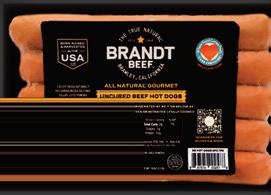



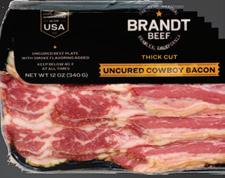






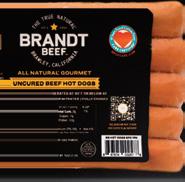
















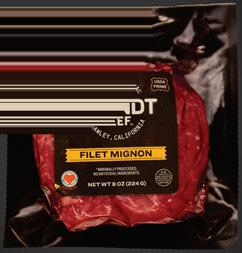
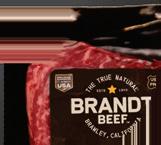












and ship-to-home. At the same time, the average number of online grocery orders from monthly active users continued to dwindle from pandemic-era highs. Lower-income households were 34% more likely to use pickup over delivery in an effort to save money.
Sylvain Perrier, president and CEO of Mercatus, suggests that traditional grocers should focus on ways to maintain engagement with their existing shoppers. “Proven ways of growing your online revenue hinge on providing a great customer experience, encouraging your more loyal customers to use frequently, and benefiting from positive
word-of-mouth advocacy that will attract others to use your online services,” notes Perrier.
Meanwhile, retailers are advised to align their buy-online-pickup-in-store and curbside pickup strategies to ensure that they’re encouraging shoppers to take advantage of these services according to need.
GROCERIES
In short, dedicating resources to omnichannel development should be seen as an investment for traditional
grocers — not as an expense — so that they can keep up with competitors in this increasingly digital landscape.
Even if online grocery has slowed down a bit for now, the future for this service still looks bright.
The 2023 Brick Meets
Click/Mercatus 5-Year
Grocery Sales Forecast, released at the beginning of the year, predicts that overall e-grocery sales will increase to a 13.6% share of the market by 2027.
Health continues to be a major priority for American consumers, with GlobalData analysts even predicting in February that shoppers would remain more influenced by their personal health than lower prices when buying food in 2023. Food retailers are uniquely positioned to help consumers manage their health through diet, medication and more. A key development of late is grocers’ ramped-up adoption of online SNAP/EBT initiatives that enable lower-income consumers to conveniently purchase healthy foods and have the orders delivered to their homes or made available for pickup at nearby stores. Also proliferating are food incentive programs such as Double Up Food Bucks, which allows SNAP recipients to earn free produce when they buy fresh fruits and vegetables with their benefit at participating retailers, and produce prescription programs that offer shoppers with diet-related health risks or conditions access to fresh fruits and vegetables “prescribed” by health care providers. Such endeavors
are part of a wider “Food as Medicine” approach at retail that also encompasses individual consultations and customized store tours with retail dietitians, as well as products and recipes targeting those with certain health issues like heart disease or diabetes via informational signage, shelf tags and QR codes.
Other ways that grocers are tailoring health offerings for customers is through internet platforms such as Sifter, which facilitates quick, easy product discovery and shopping, especially for those with special diet needs, including food allergies and food interactions with prescription medications, as well as eating preferences such as Mediterranean-style and vegan.
Retailers like Kroger and Walmart are also encouraging time-strapped shoppers to visit their in-store clinics for basic health care services and their pharmacies for vaccinations, saving potentially time-consuming visits to doctors or hospital emergency rooms. In another important development, specialty pharmacies operated by Hy-Vee, Publix and others are offering services for those with chronic and complex health conditions; these services include infusion clinics that Hy-Vee is opening in various locations across its Midwestern footprint.
Higher costs experienced by both retailers and their customers have been a major concern in the past year, and it looks like this hindrance will continue for the immediate future, even as inflation starts to soften. Grocers responding to PG’s Annual Report survey said that they expect operational costs (including energy, fuel and supplies) and overall inflation to see the largest increases for the remainder of 2023. Unfortunately, these thorny issues are also cutting into both their gross margin and net profit.
In addition to these rising costs, retailers are staying up at night worrying about labor issues such as recruitment and retention, and supply chain disruption. While they have only so much control over these challenges, some are responding by raising wages to attract and retain higher-caliber workers, and a growing number of retailers are looking to diversify their supplier network and keep a closer eye on inventory. All the while, they’re trying their best to keep prices competitive.
Different studies have offered slightly conflicting views on how inflation
20 progressivegrocer.com























F e at ce.c grocery/ ow: G w xt O f ? W v f groc et ’ oc t.
has affected shopping behavior so far.
According to the “2023 Consumer Research Report” by software company Salsify, three-fourths of consumers say they’re looking for discounts or free delivery and are buying less or putting off large purchases (the survey included shoppers in the United States, the United Kingdom, Germany, France and Australia). Meanwhile, the latest “U.S. Grocery Shopper Trends” report from FMI — The Food Industry Association, conducted by The Hartman Group, affirms that shoppers are aware of and often concerned about inflation but aren’t scaling back their orders dramatically. Instead, those affected by high prices are looking for deals where and when they can across the omnichannel realm.
A report from Coresight Research finds that grocery discount chains such as ALDI and Grocery Outlet have outperformed the broader grocery market in foot traffic over the past few months, and, of course, the
private label sector has been another beneficiary, with store brands accounting for 18.2% of total U.S. food and beverage sales as of Feb. 19, up from 17.4% for the entirety of 2022.
According to the report’s authors, Research Associate Sujeet Naik and Sector Lead Anand Kumar, a key takeaway is that the inflationary pressures are persistent. “Although U.S. grocery inflation is forecast to ease gradually over the course of 2023, the fallout of high prices and consumers’ associated behaviors will linger for some time,” they write, “This implies we will see significant stickiness in grocery shopping priorities into 2023, with many shoppers favoring low-cost options over quality and convenience. We anticipate that dollar stores and discounters will be more sought-out channels again this year.”
Yet as grocers look to offer more discounts and promotions as a competitive response, they would be wise
to balance this strategy by highlighting premium in-store offerings, such as special events, full-service departments and fresh and/or local selections. After all, these are the niches that help them stand out from more mainstream discounters.
One retailer responding to PG’s Annual Report survey says that he sees loyalty programs as the best investment in the next one to three years because, “with inflation driving price increases, this is a great incentive for customers to drive stickiness.”
FMI’s VP of tax, trade, sustainability and policy development, Andy Harig, recently noted that while he expects high food prices to remain the norm for most of 2023, the food industry is working on advancing technologies that will save time, money and resources to help get more affordable food onto consumers’ tables. This includes the use of driverless trucks, robotics, vertical farming, artificial intelligence, blockchain and more.
In just one example of artificial intelligence (AI) implementation, BJ’s Wholesale Club is partnering with Simbe to roll out the latter’s business intelligence solution, Tally, to all BJ’s club locations. The AI-powered robot will provide greater visibility into club conditions and deeper business insights, with the goal of ultimately improving operational efficiencies and enhancing the member experience.
Expect to see more retailers following suit with AI and other tools as they focus on better serving customers while cutting costs and improving efficiencies.
Contactless forms of payment are being accepted at an increasing number of grocery stores, while a few retailers continue to experiment with completely checkout-free technology. Further, in a more emerging field of payment, Giant Eagle made
headlines in March by revealing that it’s installing Bitcoin ATMs (called BTMs) at 125 of its GetGo convenience stores in various Midwestern and Mid-Atlantic metropolitan areas.
In PG’s 2023 Annual Report survey, 31% of respondents chose “mobile wallet app” as one of the smartphone features that their customers value most when grocery shopping.
A recent PYMENTS.com study finds that while just 6.1% of grocery shoppers say they prefer to pay for their
groceries with digital wallets, groceries now account for 62% of all purchases made using a digital wallet. Also, 4% of all in-store checkouts made by members of Gen Z are done using a digital wallet.
Perhaps the most aggressive retailer on the checkout innovation front is Amazon, which is expanding its Amazon One and Dash Cart contactless payment solutions to more Whole Foods Market stores across the country, the latest being
22 progressivegrocer.com
“Although U.S. grocery inflation is forecast to ease gradually over the course of 2023, the fallout of high prices and consumers’ associated behaviors will linger for some time.”
—Sujeet Naik and Anand Kumar, Coresight Research
11 stores in the Denver market. Amazon is also making its Just Walk Out technology available to other retailers on a third-party basis.
East Coast retailer cooperative Wakefern Food Corp., meanwhile, has expanded its pilot with Israel-based checkout technology provider Trigo to include an autonomous convenience store at Wakefern’s corporate campus in Edison, N.J.
Whole Foods CEO Jason Buechel re-
With the Plant Based Foods Association (PBFA) reporting earlier this year that plant-based food dollar sales grew 6.6% in 2022 to $8 billion, it looks like plant-forward eating is here for the foreseeable future as consumer eating patterns evolve in response to health, animal welfare and sustainability imperatives.
Suppliers and retailers are continuing to respond to this demand, with the result that shoppers now have more choice than ever when it comes to plant-based offerings. In the protein case, for instance, not only are there more chicken, pork and seafood analogues to join those already long-established meatless beefstyle burgers and crumbles, but items are also available in a variety of formats across the store: fresh, frozen and even
shelf stable. Meal kit companies Green Chef and Sunbasket offer options free of animal proteins, while plant-based charcuterie is starting to spark interest.
Product innovations in this space include items from the very busy Impossible Foods: Impossible Beef Lite, boasting no trans fat or cholesterol, and 75% less saturated fat, as well as 45% less total fat, than 90/10 lean beef from cows, and three plant-based chicken SKUs, Impos-
cently shared with news website Axios that he foresees a future in which grocery technologies like frictionless Just Walk Out checkout and Amazon Dash Carts co-exist with service provided by people, including store team members and “foragers” who scour local farmers’ markets and other community sites for new products. “I see a hybrid that takes place,” he noted. “I want to be sure we provide all the options that customers are looking for.”
sible Spicy Chicken Nuggets and Patties and Impossible Chicken Tenders, thereby doubling the company’s plant-based chicken portfolio to six products. Meanwhile, equally busy rival plant-based brand Beyond Meat has come out with Beyond Pepperoni and Beyond Chicken Fillet for foodservice, following its successful rollout of Beyond Steak.
There’s a whole plethora of products out there beside meat alternatives, however. According to the PBFA’s report, plantbased categories saw considerable unit growth in the following five categories: creamers, eggs, protein powders, ready-todrink beverages, and dips and spreads.
So, while recent stats suggest that plant-based meat consumption may have peaked — dollar sales for combined refrigerated and frozen alt meats were down 8.9% year over year, according to March 2023 data from Circana — there’s no reason to believe that plant-based eating will end up a flash in the pan.
There’s no “i” in team, as the saying goes, but in today’s economy, having a full and engaged roster of team members requires a certain amount of personally important compensation and benefits. Following the era of the essential worker in 2020 and 2021 and The Great Resignation in 2022, grocery employers certainly recognize the im-
portance of recruitment and retention.
According to The Food Retailing Industry Speaks survey published by FMI — The Food Industry Association, retailers continue to invest in their associates. An overwhelming 86% of retailers are offering higher compensation, and 72% are offering improved benefits.
In such a tight labor market, benefits go well beyond previously standard health coverage and time off. As workers demand flexibility, grocers are meeting that need with more shift
PROGRESSIVE GROCER May 2023 23
There’s a right way to do pork.
We call it the Prairie Fresh® Way.
At Prairie Fresh, we control the entire production process – from farms to processing plants to store distribution. That’s our connected food system.
And that’s the Prairie Fresh Way. It’s our way of delivering outstanding pork to your shelves that will keep your shoppers coming back for more. Isn’t it time to imagine all the possibilities when you partner with us?
prairiefreshway.com
 © Seaboard Foods 2023
© Seaboard Foods 2023
Maximize Quality in Your Meat Case The Prairie Fresh Way

Speaking with…Pat Watkins, Vice President of Retail Sales, Seaboard Foods, producers of Prairie Fresh

U.S. raised, all natural and premium quality are among the top claims consumers look for when making meat purchases1 and 71 percent of consumers are willing to pay more for quality meat products.2
Progressive Grocer asked Pat Watkins, Vice President of Retail Sales for Seaboard Foods, how The Prairie Fresh Way — the company’s unique approach to producing pork in a way that achieves unmatched, consistent quality — can help grocery retailers attract and retain loyal meat customers.
Progressive Grocer: Exactly what is The Prairie Fresh Way, and what does it mean for grocery retailers looking for ways to improve their offerings in the pork category?


Pat Watkins: It is our approach to how pork should be raised that is founded on a connected food system. We collaborate with our American-owned farms in the Midwest and Great Plains, processing plants and networked supply chain colleagues, which means we control the production process from farm to delivery. Because we control the entire process, we can maintain the highest production standards in everything from the exceptional attributes achieved from superior genetics to operating the newest plants in the industry to tailoring animal feed for ideal characteristics.
PG: There are three distinct product lines within the Prairie Fresh brand. Can you describe what each offers?
PW: We recently introduced Prairie Fresh USA Prime,®our premium pork brand that is setting a new standard in the meat case and meeting consumer demand for restaurantquality meals at home. Quality is proven with a three-step evaluation process that includes proprietary technology that checks cuts for tenderness, color, and marbling and ensures a higher level of consistency and quality. A hand-selection
step from the top tier of our nest, all-natural pork means cuts will deliver superior tenderness and rich, juicy avor. Plus, distinctive labeling and merchandising and marketing support are driving consumer interest.
Our Prairie Fresh Signature products are meeting increased consumer demand for value-added, and convenient meat products, with the 2023 Power of Meat study nding 67 percent of meat shoppers purchased value-added meat and poultry last year, especially among online purchases. Pre-seasoned, pre-portioned cuts are available in a variety of avors that have been consumer tested. Products come in net-weight, case-ready packaging that describes features consumers consider most important — things like product avor and protein content, plus a picture of dishes made with the product. Online recipes equip consumers with ideas to elevate their Prairie Fresh Signature dishes such as Honey Sriracha Pork Noodle Bowl or Make-and-BakeLater Garlic Herb Pork Tenderloin Sandwich.
Prairie Fresh Natural is our line of minimally processed pork made with no arti cial ingredients, which lets our quality shine through. It’s a perfect complement to our other lines to provide retailers the right mix of products for self-service and meat counter displays. No matter which product grocers choose, members of our plant production team are invested in making pork the right to speci cation for our customers. You see the difference in better yield and consistency in the meat case.
PG: What else would you like retailers to know about partnering with Prairie Fresh?

PW: The Prairie Fresh Way extends to the way we service our customers. Our deep meat knowledge, marketing support and data-driven consumer insights are the foundation to our partnership. We know that keeping your shelves stocked with quality pork is how you keep your shoppers happy. And that’s what we’re here to help you do.

ADVERTORIAL
›› TO JOIN US ON THE PRAIRIE FRESH WAY, VISIT www.prairiefreshway.com
1 2022 Power of Meat study, 2 Prairie Fresh data
options and tech-driven scheduling tools. Schnuck Markets, for example, has broadened its flex force employment options that allow associates to select shifts and store locations that best align with their schedules.
In a high-stress decade, employers are also ramping up their mental
health-and-wellness benefits. Walmart, for its part, recently introduced a new workplace course that guides managers in helping workers who are struggling with mental health issues.
Even as jobless claims are starting to tick up again, grocery industry employers continue to invest in engagement to main-
tain their workforces and build their businesses for the future. Whether it’s offering more perks for e-commerce gig workers, expanding paid parental leave to full-time store associates or continuing hybrid work models at corporate offices, efforts to maintain individual workers’ satisfaction are pivotal in staying competitive.
With today’s consumers being constantly inundated with new products, advertisements and promotional offers, next-generation personalization has been adopted by many grocers in an effort to stand out among a crowded field. Where retailers once used generic segmentation to offer personalization, more are now moving toward an individualized approach.
Personalization has taken on many different forms in the grocery industry, but providing targeted communications, product recommendations and more is the name of the game in this technology-forward day and age. Sujeet Naik, research associate at Coresight
Research, asserts that proper personalization, especially in terms of promotions and recommendations, can help food retailers increase both sales and basket size. Data, consumer analytics and machine-learning technologies can give grocers the ability to tailor these things at an individual level to create true customer satisfaction.
While privacy concerns have cropped up for shoppers in recent years, 90% of consumers still appreciate personalized offers, according to customer experience
management company Merkle. As Shekar Raman, CEO and co-founder of Birdzi, notes in an online Progressive Grocer column, true personalization has a greater effect on long-term customer relationships, since the shopper is consistently shown effective messaging and deals.
Nothing against macaroni and cheese, hot soup, and rotisserie chicken — which remain stalwarts of grocery perimeters — but the prepared food offerings at many food retailers are becoming more eclectic.
Reflecting a diverse shopping base, prepared food offerings are increasingly created to be culturally relevant and ethnically inspired. Shoppers at Whole Foods Market, for example, can pick up a 12-ounce portion of chicken tikka masala or chicken tinga enchiladas in the grab-and-go case, or linger over the many options at the grocer’s famous hot food bar. Customers at Wegmans Food
Markets can bring home a power bowl featuring Peruvian chicken with green sauce, or Greek Santorini salad, among dozens of other offerings. Regionality is another play, evident in popular barbecue fare at H-E-B stores, in Texas and lobster salad rolls at Shaw’s, in New England. Sushi, meanwhile, is nearly ubiquitous in grocery stores throughout the United States.
In addition to offering more flavor, retail delis are providing different formats. Prepared food areas have
become veritable food halls, with grab-and-go packaged products, hot bars, cold bars, meal kit displays and more.
In today’s economy, grocers can also deliver value and better compete with restaurants by offering meal deals.
The Fresh Market, for instance, promotes its line of Bistro Meals by offering an entrée and two sides that start at $9.99.
On that note, nearly 90% of shoppers who purchase deli prepared foods, sandwiches or meal kits consider them an alternative to restaurant fare or last-minute dinner plans, according to research from Advantage Solutions.
26 progressivegrocer.com

2023 +38% 2019 +23% Deli SalesfromGrab & Go
As inflation surged over the past year, driving up CPG prices, customers stepped up their purchases of the affordable options offered by store brands. Using data from Circana, PLMA reported in April that store-brand sales were maintaining double-digit growth rates and gaining market share in both dollars and units. During the first three months of 2023, store-brand dollar volume rose 10.3% on a year-overyear basis, compared with 5.6% for branded products.
As a result of this heightened consumer interest, retailers are introducing even more new store-brand offerings. Among those that have recently done so are Albertsons Cos., which has expanded and redesigned its health-conscious Open Nature line, now featuring an updated logo and 12 new dairy-free products; Dollar General, which has launched the OhGood! collection of gummy vitamins and supplements, as well as reformulating and rebranding its super-premium Nature’s Menu pet food brand and beefing up its store-brand skin and hair care assortment; and Weis Markets, which has debuted the Weis by Nature ice cream brand with 11 crowd-pleasing flavors.
As evidenced by these examples, store brands have moved far beyond their humble generic origins to become items able to compete on quality with premium national brands — but not at premium prices.
“We believe every customer should have access to affordable organic options that support healthy lifestyles and diverse shopping preferences,” said Jennifer Saenz, EVP and chief merchandising officer at Albertsons, when the grocer unveiled a new visual identity for its O Organics brand in March. “Over the years, we have made organic foods more accessible by
Along with this year’s Earth Day came a slew of reports from grocers large and small detailing their efforts to help protect the planet — and they mean business. Sprouts Farmers Market, for example, is literally laying the groundwork for a more sustainable future by contributing food waste diverted from its stores to create compost and feed for regenerative farms in Tennessee and Missouri. Kroger, meanwhile, is helping to reduce food waste by partnering with Upcycled Foods Inc. to create private label packaged breads that contain 10% upcycled grain.
expanding O Organics to every aisle across our stores, making it possible for health- and budget-conscious families to incorporate organic food into every meal.”
Offering shoppers value-priced premium products is a winning proposition for customers and grocers alike. In 2018, O Organics became a $1 billion brand and one of the nation’s largest brands of USDA Certified Organic products. Today, it’s the leading organic brand sold at Albertsons banners, boasting more than 1,500 products in its assortment.
More grocers than ever are signing on to curb food waste through the Flashfood app, and others, including Walmart, Amazon and The Giant Co., are rolling out electric delivery vehicles that avoid standard gasoline usage and prevent harmful greenhouse-gas emissions. Conserving natural resources is on the agenda for Fareway Stores, which is building a 1-megawatt solar facility near its headquarters, and also introducing electric vehicle-charging stations at several of its stores throughout Iowa (for more on retailers’ EV charging stations, see the article starting on page 60).
These examples of supermarket sustainability efforts just scratch the surface of an issue that has become table stakes for the industry. Consumers are becoming hyper-vigilant about identifying sustainable practices, with Shopkick recently finding that 55% of shoppers consider those practices when making a purchase.
Additionally, Kroger’s retail data science, insights and media arm, 84.51°, reports that 51% of shoppers are especially concerned about sustainability related to items at the deli, meat and fish counters, further proving that now is the time to walk the walk when it comes to doing right by Mother Nature.
28 progressivegrocer.com
PROGRESSIVE GROCER May 2023 29 Rank Company Fiscal YearEnd Sales (In Millions of Dollars U.S.) Prior Year Percent Change Store Count Top Executives 1 Walmart U.S. $420,600 $393,247 6.96% 5,317 John Furner, President and CEO 2 Amazon (online store and physical store segments only) $238,967 $239,150 -0.08% 600 Andrew R. Jassy, CEO 3 Costco (U.S.) $165,294 $141,398 16.90% 578 W. Craig Jelinek, President and CEO 4 The Kroger Co. $148,258 $137,888 7.52% 2,719 Rodney McMullen, Chairman and CEO 5 Walgreens Boots Alliance (U.S retail) $132,703 $132,509 0.15% 8,756 Rosalind Brewer, CEO 6 Target $109,120 $106,005 2.94% 1,948 Brian Cornell, Chairman and CEO 7 CVS Health (retail segment) $106,594 $100,105 6.48% 7,795 Karen Lynch, President and CEO 8 Sam’s Club (U.S.) $84,345 $73,556 14.67% 600 Kathryn McLay, President and CEO 9 Albertsons Cos. $77,600 $71,887 7.95% 2,271 Vivek Sankaran, President and CEO 10 Ahold Delhaize USA $57,959 $53,699 7.93% 2,051 J.J. Fleeman, CEO 11 Loblaw Cos. Ltd. $56,504 $52,269 8.10% 2,742 Galen G. Weston, Chairman and President 12 Publix Super Markets $54,500 $47,997 13.55% 1,334 Randall T. Jones Sr., CEO 13 Alimentation Couche-Tard (U.S. stores) $41,754 $31,128 34.14% 5,714 Brian Hannasch, President and CEO 14 Walmart de Mexico y Centroamerica $40,496 $35,964 12.60% 3,744 Guilherme Loureiro, President and CEO 15 H-E-B $38,900 $34,000 14.41% 420 Charles Butt, Chairman and CEO 16 Dollar General $37,844 $34,220 10.59% 19,104 Todd Vasos, Chairman and CEO 17 C&S Wholesale Grocers $34,700 $33,022 5.08% 637 Bob Palmer, CEO 18 Costco (Canada) $31,675 $27,298 16.03% 107 Pierre Riel, EVP/COO, Costco International 19 Empire Company Ltd. (Sobeys) $30,162 $28,268 6.70% 1,600 Michael Medline, President and CEO 20 United Natural Foods Inc. $28,928 $26,950 7.34% 73 Steven Spinner, Chairman and CEO 21 Dollar Tree (includes Family Dollar) $28,318 $26,309 7.64% 16,340 Richard W. Dreiling, President and CEO 22 Rite Aid $24,568 $24,043 2.18% 2,450 Elizabeth "Busy" Burr, Acting President and CEO 23 Meijer Inc. $24,257 $22,151 9.51% 262 Rick Keyes, President and CEO 24 Walmart Canada $22,300 $21,773 2.42% 402 Gonzalo Gebara, President and CEO 25 7-Eleven Inc. (U.S. only) $21,254 $23,841 -10.85% 12,702 Joe DePinto, CEO 26 ALDI USA $20,565 $18,200 12.99% 2285 Jason Hart, CEO 27 BJ’s Wholesale Club $18,918 $16,306 16.02% 237 Bob Eddy, President and CEO 28 Metro (Canada) $18,888 $18,283 3.31% 1,620 Eric R. La Fleche, President and CEO 29 Wakefern Food Corp. $18,300 $17,800 2.81% 362 Joe Colalillo, Chairman and CEO 30 Trader Joe’s Co. $16,543 $14,900 11.03% 544 Dan Bane, Chairman and CEO 31 QuikTrip Corp. $16,400 $11,300 45.13% 980 Chet Cadieux, CEO 32 RaceTrac $16,200 $9,600 68.75% 552 Max McBrayer, CEO 33 Casey’s $15,225 $12,950 17.57% 2,452 Darren Rebelez, CEO 34 Wawa $15,102 $11,900 26.91% 965 Chris Gheysens, President and CEO 35 EG America (U.S.) $13,541 $12,254 10.50% 1,702 George Fournier, President 36 Hy-Vee Food Stores Inc. $12,785 $12,100 5.66% 285 Jeremy Gosch, Chairman and CEO 37 Wegmans Food Markets Inc. $12,300 $11,200 9.82% 110 Colleen Wegman, President and CEO 38 Sheetz Inc. $11,700 $5,600 108.93% 630 Joseph Sheetz, CEO 39 Associated Wholesale Grocers $11,500 $10,812 6.36% 70 Dave Smith, President and CEO
Company reports, Progressive Grocer research, industry and analyst
Source:
estimates
30 progressivegrocer.com Rank Company Fiscal YearEnd Sales (In Millions of Dollars U.S.) Prior Year Percent Change Store Count Top Executives 40 Giant Eagle Inc. $11,200 $10,600 5.66% 474 Bill Artman, CEO 41 SpartanNash Co. $9,640 $8,900 8.31% 147 Tony Sarsam, President and CEO 42 WinCo Foods Inc. $9,500 $8,400 13.10% 139 Grant Haag, CEO 43 Soriana $9,189 $8,206 11.98% 824 Ricardo Martin Bringas, CEO 44 Southeastern Grocers LLC $9,000 $9,600 -6.25% 423 Anthony Hucker, President and CEO 45 Northeast Grocery Inc. $8,400 $8,120 3.45% 293 Frank Curci, Chairman and CEO 46 HelloFresh $8,335 $6,527 27.70% N/A Dominik Richter, CEO 47 Alimentation Couche-Tard (Canada, Couche-Tard) $7,948 $6,085 30.62% 2111 Brian Hannasch, President and CEO 48 Chedraui USA $7,500 $6,300 19.05% 379 Jose Antonio Chedraui Eguia, CEO 49 Raley’s Supermarkets $6,750 $6,100 10.66% 253 Keith Knopf, President and CEO 50 Demoulas Super Markets Inc. (Market Basket) $6,600 $6,200 6.45% 87 Arthur Demoulas, President and CEO 51 Sprouts Farmers Market $6,404 $6,099 5.00% 386 Jack Sinclair, CEO 52 The Save Mart Cos. $5,700 $5,600 1.79% 204 Nicole Pesco, CEO 53 ARKO Corp. $5,602 $4,728 18.49% 1,404 Arie Kotler, President and CEO 54 Stater Bros. Markets $5,600 $4,700 19.15% 170 Pete Van Helden, CEO 55 Big Lots $5,468 $6,150 -11.09% 1,425 Bruce Thorn, President and CEO 56 Ingles Markets Inc. $5,300 $4,988 6.26% 198 James Lanning, President and CEO 57 Save A Lot $4,900 $4,700 4.26% 800 Leon Bergmann, CEO 58 Save-On-Foods $4,812 $4,289 12.19% 181 Darrell Jones, President 59 H-E-B (Mexico) $4,800 $4,300 11.63% 71 Fernando Martinez, Director General 60 Weis Markets $4,695 $4,224 11.15% 196 Jonathan Weis, Chairman, President and CEO 61 Dollarama $4,330 $3,430 26.24% 1,421 Neil Rossy, President and CEO 62 Defense Commissary Agency (DeCA) $4,200 $4,000 5.00% 236 Grier Martin, CEO 63 Brookshire Grocery Co. $4,100 $3,800 7.89% 180 Brad Brookshire, Chairman and CEO 64 Schnuck Markets Inc. $3,700 $3,600 2.78% 112 Todd Schnuck, Chairman and CEO 65 Alex Lee Inc. (Lowes Foods) $3,600 $3,500 2.86% 100 Brian George, President and CEO 66 Grocery Outlet Inc. $3,578 $3,079 16.21% 441 Eric Lindberg, CEO 67 Key Food Stores Cooperative $3,500 $3,100 12.90% 265 Dean Janeway, CEO 68 Brookshire Brothers $3,400 $3,400 0.00% 180 John Alston, President and CEO 69 Houchens Industries Inc. $3,190 $2,890 10.38% 300 Dion Houchins, Chairman and CEO 70 K-VA-T Food Stores Inc. (Food City) $3,100 $2,800 10.71% 138 Steven C. Smith, CEO 71 Associated Food Stores $2,800 $2,600 7.69% 450 Robert Obray, President and CEO 72 Big Y Foods Inc. $2,700 $2,500 8.00% 84 Charles D’Amour, President and CEO 73 Giant Tiger (Canada) $2,663 $2,515 5.88% 260 Gino DiGioacchino, Interim CEO 74 99 Cents Only $2,634 $2,359 11.66% 391 Barry Feld, CEO 75 Bozzuto’s Inc. (Wholesale) $2,500 $2,400 4.17% N/A Michael Bozzuto, President and CEO





32 progressivegrocer.com Rank Company Fiscal YearEnd Sales (In Millions of Dollars U.S.) Prior Year Percent Change Store Count Top Executives 76 The Fresh Market $2,100 $1,980 6.06% 160 Jason Potter, CEO 77 Woodman’s Markets $1,900 $1,800 5.56% 19 Phil Woodman, President 78 Village Super Market $1,820 $1,512 20.37% 34 Robert Sumas, CEO 79 Rouse Enterprises LLC $1,800 $1,600 12.50% 63 Donny Rouse, CEO 80 Marc Glassman Inc. (Marc’s stores) $1,730 $1,530 13.07% 61 Marc Glassman, Chairman 81 Vallarta Supermarkets $1,730 $1,498 15.49% 53 Enrique Gonzalez Jr., President and CEO 82 H Mart $1,700 $1,400 21.43% 97 Il Yeon Kwon, Founder and CEO 83 Lowe’s Pay-N-Save Inc. $1,700 $1,590 6.92% 146 Roger Lowe Jr., CEO 84 Coborn’s Inc. $1,623 $1,400 15.93% 120 Chris Coborn, President and CEO 85 Save-On Foods $1,500 $1,200 25.00% 186 Darrell Jones, President 86 99 Ranch Market $1,500 $1,387 8.15% 58 Alice Chen, CEO 87 Fresh Thyme Market $1,400 $1,204 16.28% 70 Gerald Melville, President 88 La Michoacana Meat Market $1,400 $1,200 16.67% 135 Rafael Ortega, President Source: Company reports, Progressive Grocer research, industry and analyst estimates n Illuminate spaces with innovative, high quality technology n Minimize energy consumption and cost n Collaborate with a lighting leader that has over 100 years experience Lighting solutions from your trusted partner Explore our broad portfolio of lighting and controls solutions at Acuitybrands.com/grocery AB_1065502_NTLACCTS_Progressive Grocer Half Page Ad_0222.indd 1 2/16/22 4:01 PM
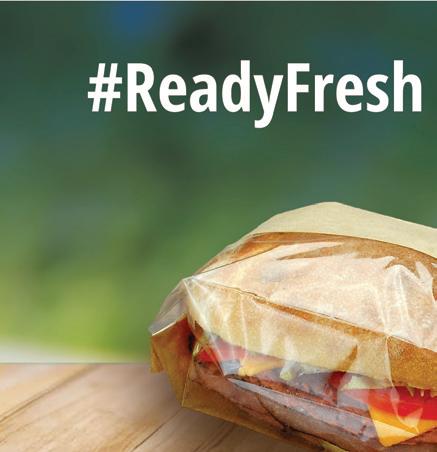




PROGRESSIVE GROCER May 2023 33 Rank Company Fiscal YearEnd Sales (In Millions of Dollars U.S.) Prior Year Percent Change Store Count Top Executives 89 Northgate Gonzalez Market $1,345 $1,105 21.72% 42 Miguel Gonzalez Reynoso, President and CEO 90 Fareway Stores Inc. $1,300 $1,135 14.54% 108 Reynolds Cramer, President and CEO 91 Lidl U.S. $1,275 $1,100 15.91% 177 Michal Lagunionek, President and CEO 92 Superior Grocers $1,275 $1,075 18.60% 47 Mimi Song, President and CEO 93 Sedano’s Supermarkets $1,200 $1,150 4.35% 35 Agustin Herran, President and CEO 94 Festival Foods $1,100 $1,050 4.76% 40 Mark Skogen, CEO 95 Natural Grocers by Vitamin Cottage $1,089 $1,055 3.22% 164 Kemper Isley, Chairman, Director and Co-President 96 M&M Food Market $1,035 $982 5.40% 2315 Andy O'Brien, CEO 97 Gopuff $1,000 $1,800 -44.44% N/A Yakir Gola and Rafael Ilishayev, Co-CEOs 98 Patel Brothers $700 $576 21.53% 56 Talashi Patel, Co-Founder 99 Blue Apron $458 $470 -2.55% N/A Linda Kozlowski, CEO 100 Thrive Market $510 $450 13.33% N/A Nick Green, CEO TOTAL $2,490,508 11.94%
Sound Bites
AS CONSUMERS KEEP ON SNACKING, CPGS AND RETAILERS FIND NEW WAYS TO MEET TASTES ACROSS DAYPARTS AND FORMS.
By Lynn Petrak
aybe it’s stress eating caused by the economy. It could be part of the shifting work culture. It might be attributed to diets that are less centered on defined meals and more driven by personal circumstances and cravings.
At any rate, the trend toward all-day snacking has yet to slow down. What may have started with pre-pandemic on-the-go lifestyles has continued in the wake of an unconventional decade, with data bearing out Americans’ penchant for snacking.
According to information from Circana (the new name for the recently merged IRI and NPD firms), 49% of consumers eat three or more snacks per day. That’s up four percentage points from just two years ago.
Circana’s 2023 Snacking Survey also found that the noshing way of life spans demographics. The 25-34 age bracket leads the charge, with 68% eating threeplus snacks a day, followed by those age 35-44 (60%) and Gen Z consumers between 18 and 24 (58%).
“All generations are snacking three-plus snacks a day, just at varying levels,” noted Sally Lyons Wyatt, EVP of client insights at Chicago-based Circana, during a recent webinar with SNAC International.
As snacking covers a wide population ground, it also extends to occasions throughout the day. Circana’s data reveals that morning and late evening are the largest growth occasions, likely because of changed or changing work/life behaviors. According to Wyatt, younger generations are “really rocketing” morning and late-evening eating.
Other research supports the ongoing snackification of diets. Research from 210 Analytics finds that while volume is down in some categories, snack sales are defying many inflation-era trends.

“Sales of cookies, crackers and snacks are boosted by inflation, much like many areas of the store,” Anne Marie Roerink, principal of San Antonio-based 210 Analytics, tells Progressive Grocer. “However, where most areas have fallen to single-digit dollar increases, cookies, crackers and snacks are still growing by double digits in the mid-teens.”
Deirdre McFarland, SVP, marketing and communications at New York-based ad analytics firm NCSolutions, agrees that certain snack categories are holding their own. “People like their cookies. Although the unit price for cookies was up 16.34% in February 2023 compared to February
Key Takeaways
The trend toward all-day snacking has yet to slow down.
Macro trends within the salty snack sector include plant-based and better-for-you products, as well as intense flavors and the combination of sweet and savory.
Meanwhile, the overall sweet snack space is defined by parallel demand for indulgent and permissibly indulgent offerings.
34 progressivegrocer.com SOLUTIONS Snack Report
2022, the units per trip were down less than half a percentage point,” observes McFarland, adding, “This indicates that consumers might not be as concerned about the price hikes if it means keeping their pantries stocked with cookies.”

Meanwhile, to Roerink’s point, some types of snacks are performing especially well, both in terms of innovation and sales.
Feeling Salty
Perennially popular salty snacks continue to land in shoppers’ baskets. “Salty snacks are a giant seller, with $29 billion in the past year,” notes Roerink. “This was up 15.5%, as the average price per pound increased by nearly 17% over the past year.”
Reflecting the entrenchment of salty snacks, high pricing hasn’t made a big dent in consumption habits. “Potato wholesale prices are prompting very high inflation in the fresh produce department, frozen potato products, and potato chips as well,” says Roerink. “Nevertheless, pound sales are only trailing prior-year levels by 1.1%.”
Within the salty snack sector, some macro trends are evident. Plantbased and better-for-you products, for example, continue to be a hotbed of R&D activity. Recent introductions include tomato chips from Just Pure Foods and plant-based popped crisps from Pure Protein. Flavor, including intense flavors and palate-piquing combinations, is another area of differentiation in salty snacks. Intensity is an attribute of new products like Takis Intense Nacho snacks from Grupo Bimbo-owned Barcel USA, and Sweet and Tangy BBQ Doritos from PepsiCo-owned Frito-Lay.
During the SNAC International webinar, Wyatt pointed to the blurring of flavors evident in this stalwart category, which now features items like Skinny Pop’s Sweet Vanilla Kettle popcorn, Trix Popcorn and Bugles’ Cinnamon Toast Crunch corn chips. “We’ve seen it happen, even in salty snacks that are predominantly salty, crunchy and crispy, to now, with sweet [flavors],” she said. “It’s happening because we’ve added more to those categories, and it’s showing up in what consumers tell us they love about their favorite snacks.”


Carnivorous Cravings
What accelerated with Paleo, keto and other high-protein diets a few years ago seemingly hasn’t peaked, as meat snacks are another popular snack form.
Roerink observes: “With an average assortment of 50 different items between the front end and aisle, the average number of items

per store has increased 5.9% over the past few years.”







Many of those items include meat snacks that are innovative in form and ingredients. “There are quite a few developments, from different types of protein, such as bison and elk, to the same types of claims seen in the meat department, including organic, grass-fed and regenerative agriculture,” says Roerink.


On that last point, the Chomps brand of meat snacks recently revealed that it’s working with the outcomes-based verified regenerative sourcing solution Land to Market, based in Durango, Colo., to measure its environmental impact.


“At our scale, when thinking about domestic and international sources, we want to uphold the highest standards, challenge our own supply base, and better our own understanding so we can ask the right questions,” explains Peter Maldonado, co-founder and CEO of Naples, Fla.-based Chomps.

PROGRESSIVE GROCER May 2023 35
masonways.com | 800-837-2881
The blurring of categories includes fusions of salty snacks and meat snacks. Earlier this year, Jack Link’s and Doritos teamed up to launch beef jerky and meat sticks featuring popular Doritos flavors, including its signature spicy coating and Flamin’ Hot profile.
The Sweet Indulgence Spectrum
Meanwhile, the overall sweet snack space is defined by parallel demand for indulgent and permissibly indulgent offerings. The scale of indulgence is largely based on consumers’ mindsets at a particular moment in time.
On the better-for-you edge of the sweet snack business, brands that have traditionally built their name on health, wellness, or natural and organic profiles are adding items geared toward consumers seeking indulgent rewards. The Chobani brand of yogurt, for instance, recently unveiled a new limited-time Flip Confetti Birthday Cake flavor and a dessert-inspired Zero Sugar Boston Cream Pie variety.
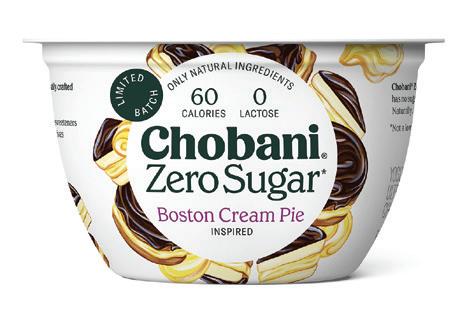
In this arena, too, plant-based sweets are providing a new layer to the segment. The Hershey Co., for example, recently rolled out Reese’s Plant Based Peanut Butter Cups and Hershey’s Plant Based Extra Creamy with Almonds and Sea Salt candy bar, while Unilever’s Magnum ice cream brand has expanded its options with a line of nondairy bars made with vegan chocolate.

Sweet snacks designed for consumers with specific health needs are also indicative of today’s mindful snacking habits. One
Candy Sales Take a Predictable, Sweet Ride
case in point is the new Mightylicious cookie that provides a decadent taste yet is 100% free of gluten, wheat, rye, barley and rBST. Another example is a PB&J snack from Bobo’s, available in grape and strawberry jam flavors and marketed as glutenand soy-free, vegan, and certified kosher. Bite-sized treats also straddle the indulgence line. Products like Enstrom Almond
Toffee Petites and chocolate-covered mascarpone truffles from Schuman Cheese are billed as rich and satisfying, but they come in smaller portions.
When it comes to the consumption of confections, people are still noshing on candy even as consumption of sweet treats spikes at Halloween, the holidays and Valentine’s Day and tends to level off in the summer, according to NCSoutions. The firm’s research also shows that chocolate remains a fan favorite, purchased 15% more often than other types of candy.
36 progressivegrocer.com SOLUTIONS
MAR 2022 APR 2022 MAY 2022 JUN 2022 JUL 2022 AUG 2022 SEP 2022 OCT 2022 NOV 2022 DEC 2022 JAN 2023 FEB 2023 -2% 11% -21% -2% 1% 3% 9% 36% -25% 31% 17% -27%
Snack Report
U.S.Candy Sales,
Change Month-over-Month
Annual
%
Source: NCSolutions Purchase Data, March 2023
Resiliency in Action
In Colorado, Kroger drives growth by uplifting a community.
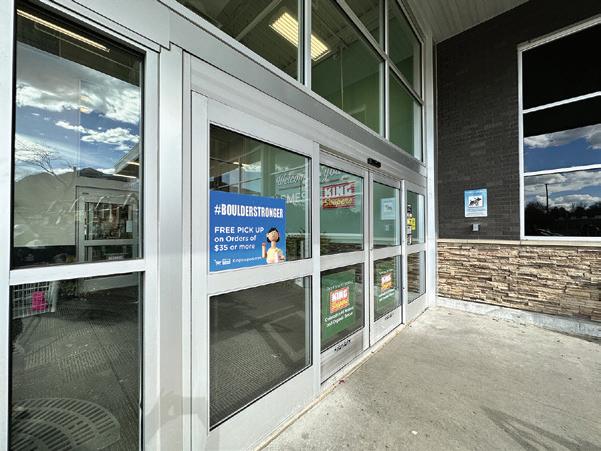 By Gina Acosta
By Gina Acosta
The word “resiliency” is something that The Kroger Co. CEO Rodney McMullen likes to mention frequently when he talks about his company, whether on earnings calls, at industry conferences or on cable news shows. More often than not, he talks about resiliency as it relates to the company’s business model.
“We are delivering a fresh, affordable and seamless shopping experience for our customers, with zero compromise on value, quality, selection or convenience,” McMullen said during the Cincinnati-based company’s fourth-quarter earnings call this past March. “We are advancing our purpose to feed the human spirit by significantly increasing associate wages and uplift ing our communities. And we are delivering on our financial commit ments through our strong, resilient value creation model.”
Recently, however, I had the opportunity to see another side to Kro ger’s resilience — specifically, how the retailer put resiliency into action at one of its stores: Table Mesa King Soopers, in Boulder, Colo., where 10 people lost their lives in March 2021 in a mass shooting. After that horrible tragedy, which resulted in the death of an off-duty police officer, Kroger closed the store for 11 months; the location reopened in 2022 after a full remodel and celebrations honoring the victims.

On a sunny and warm spring day in April of this year, I entered the store, which had a “Boulder Strong” sign on the front door. Young families pushed shopping carts near the plentiful graband-go sections of the perimeter; at least two dads picked up containers of freshly pulled rotisserie chicken breast.
In the floral department, high school students had stopped by on their way to the prom. They needed floral arrangements for their dates, and their community King Soopers had dozens and dozens of gorgeous bouquets on display.
In the international foods aisle, college students who likely attend the nearby University of Colorado searched for a specific kind of salsa.
RETAILER DEEP DIVE
The Kroger Co.
The Kroger Co.
“It has to be hot,” one woman told her shopping companion. The woman grabbed a jar of Kroger’s Private Selection Restaurant Style salsa and headed over to the tortilla chip aisle.
Walking every aisle of that store gave me goose bumps, not because of the horrific events that had unfolded there two years ago, but because of how much pride, how much strength, how much empathy could be felt from every associate working in this store on the day I visited. Even in a store rocked to its core by an unimaginable tragedy, Kroger continues to deliver a superior customer experience. Never has the company’s purpose of feeding the human spirit and uplifting communities been more alive than at that King Soopers in Boulder.
This is the stuff that great companies are made of, and it’s one of four key reasons that Kroger is poised to sustain its momentum as America’s top grocer, driving profitable sales growth and providing a seamless shopping experience.
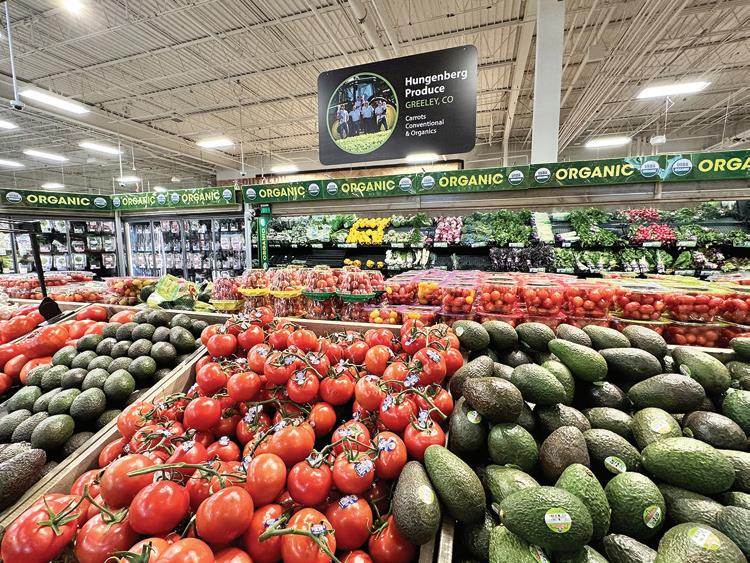
‘Food-First Business’ Evolution
Kroger’s current business model is founded on four pillars: fresh, private brands, personalization and seamless (omnichannel). By delivering on these four pillars, the company continues to churn out profitable sales growth at a time when the grocery market is oversaturated, hypercompetitive and an exceedingly expensive industry in which to operate.
In fiscal 2022, Kroger, which operates nearly 2,800 stores, built on record fiscal years in 2020 and 2021 with even more impressive earnings. Kroger saw a year-over-year total company sales increase of 5.2%, excluding fuel, to $148.3 billion, compared with $137.9 billion in 2021. Gross margin was 21.4% of sales for 2022, and the company’s net total debt to adjusted EBITDA ratio was down to 1.57, compared with 1.63 one year ago. The grocer expects to bring that momentum into 2023 and deliver revenue and EPS growth on top of these record results.
“Kroger’s 2022 results demonstrate the strength of our value creation model,” said CFO Gary Millerchip during the March earnings call. “In 2023, we expect to grow revenue by continuing to invest in our customers through competitive pricing and personalization, fresh products and a better shopping experience.”
Since introducing this value creation model in 2019, Kroger has achieved not just consistent sales growth, but also consis-
tent returns for shareholders that have significantly exceeded the retailer’s total shareholder return commitment of 8%-11%. Specifically, over the past three years, Kroger has achieved more than 19% compounded annual growth rate in adjusted FIFO net operating profit and approximately 25% compounded annual growth rate in adjusted EPS. Over the same time period, Kroger generated adjusted free cash flow of approximately $9.7 billion and has returned a total of nearly $5.8 billion to investors via dividends and buybacks.
Fiscal 2023 at Kroger is expected to bring comps without fuel of 1%-2%, and adjusted net earnings per diluted share of $4.45-$4.60, including an estimated benefit from the 53rd week of approximately 15 cents. Anticipated adjusted FIFO operating profit is $5 billion-$5.2 billion, with capital expenditures totaling $3.4 billion-$3.6 billion.
Meanwhile, the Federal Trade Commission continues to review the proposed merger between Kroger and Boise, Idaho-based Albertsons Cos., and the companies are planning to sell hundreds of stores in a move to dispel antitrust concerns. The value of the stores could exceed $1 billion.
“We are evolving from a traditional food retailer into a more diverse food-first business that we believe can deliver sustainable future growth and succeed in a variety of operating environments,” Millerchip added. “Upon closing our merger with Albertsons, which is anticipated to be in early 2024, we believe the merger will significantly accelerate our go-to-market strategy and deliver total shareholder return well above our stand-alone model during the first four years post-close.”
Still Leading With Fresh
Kroger has built its reputation in grocery by aiming to provide customers a “full, fresh and friendly” experience. The retailer demonstrated operational
38 progressivegrocer.com RETAILER DEEP DIVE
“We are delivering a fresh, affordable and seamless shopping experience for our customers, with zero compromise on value, quality, selection or convenience. We are advancing our purpose to feed the human spirit by significantly increasing associate wages and uplifting our communities. And we are delivering on our financial commitments through our strong, resilient value creation model.”
—Rodney McMullen, CEO, The Kroger Co.










New! The Biggest Innovation in the Drink Mix Category in 100 Years To order, contact your Heartland FPG or Splenda Rep Splenda.com/products Available in Fruit Punch, Sweet Tea, Pink Lemonade and Peach Mango Zero Calories Zero Sugar Peel and Pour into 2-quarts of water to make the perfect pitcher
RETAILER DEEP DIVE
The Kroger Co.
excellence in all three metrics in 2022. Kroger is still in the throes of implementing its End-to-End fresh initiative, which is designed to deliver fresher food to shoppers and keep perishables on the shelf longer.
“As an important influence on where customers shop, we are constantly improving how we bring even fresher food to our stores and e-commerce experience,” McMullen said. “Our End-to-End fresh initiative is changing the way our teams deliver on our commitment to freshness, and we are incredibly pleased with the success. In 2022, more than 1,400 stores implemented the End-to-End produce solution, driving measurable increases in both fresh and total store sales.”
In 2023, Kroger plans to keep innovating the fresh experience to drive customer satisfaction and improve the product mix.
“We continue to improve inventory management tools, strengthen our supply chain to deliver additional days of freshness and enhance our offerings to meet customer demand,” McMullen said. “Our merger with Home Chef brought significant capabilities in in-store and restaurant-quality meal solutions. We will be expanding our Home Chef production facilities to meet this growing customer need.”
At the Boulder King Soopers, shoppers seemed to gravitate toward several refrigerated cases with Home Chef-branded products, including one showcasing value-added fresh meats.
As for the health of the Kroger consumer, McMullen said that the retailer’s value prop appeals to more higher-income shoppers.
“Inflation has started to stabilize,” he observed. “The higher-income customer is really resonating with our value proposition, and we’re having meaningful increases there in terms of that customer. And the profitability of that customer is higher as well because they shop the full mix of our stores and they would be buying more produce in fresh departments and deli/bakery, which is driving some of that profitability. So we feel really good on how we’re connecting with our customers during this time.”
But, he noted, the retailer is always on the lookout to do better.
“Customers that are most loyal to us will still spend 30% to 50% of their spending somewhere other than Kroger, and that’s an opportunity for us to improve our position,” McMullen said. “When you look at fresh, we start off with a higher share of fresh than we do in other parts, but it’s an area where we’re meaningfully better than our competitors. So our ability and focus on growing our business is to do ‘full, fresh and friendly’ in a way that it resonates with all customer types, and do it in a way where there’s zero compromise. Fresh is incredibly important, and friendly is incredibly important. That’s our sweet spot where we connect the best, and that is a growing area across the U.S. And we operate in many markets that are growing as well.”
Private-Brand Powerhouse
The second pillar of Kroger’s strategy, private brands, was a major reason that the retailer posted another strong quarter and fiscal 2022, with same-store sales up 10.1% in Our Brands, reflecting the growing importance to inflation-embattled customers
of these exclusive-to-Kroger products.
“A customer on a budget can get great value with Our Brands,” McMullen affirmed. “They can save 7% to 10% by buying Our Brands versus national brand. If you look at our Home Chef and products related to that, a customer can get a meal for … one-third to one-fourth of what it costs to go out.”
Over the past 10 years, Kroger’s private-brand portfolio has picked up share during almost every year. The only exception to that was a little bit of time during the pandemic, when consumers had more money in their pockets, McMullen noted.
During its fourth quarter, Kroger celebrated the 10th anniversary of Simple Truth, a more than $3 billion brand providing customers with 1,500-plus unique natural and organic products. The milestone came after the retailer launched Smart Way, a new opening-price-point brand, as part of Kroger’s Our Brands portfolio. This line merges 16 legacy brands into a single, easy-to-find identity. Smart Way joins Kroger brand, Private Selection, Home Chef, Heritage Farm and Simple Truth in the grocer’s private-brand lineup.
“By consolidating and simplifying several brands into one, we are making it easier for customers while creating a point of differentiation across the full portfolio,” McMullen explained. “We will continue expanding Our Brands to more categories with innovative product offerings. Our goal is to help every customer find high-quality, affordable products they love, from pantry staples to fresh food to ready-to-eat restaurant-quality meals.”
During Q4, the company also opened its 1,000th Murray’s Cheese shop within Kroger stores, offering customers a highly curated cheese selection in more than 30 states across the country.
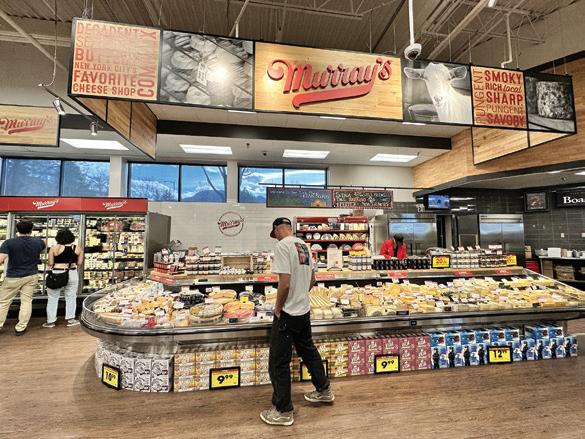
40 progressivegrocer.com
During Q4, the company opened its 1,000th Murray’s Cheese shop within Kroger stores, offering customers a highly curated cheese selection in more than 30 states across the country. The Table Mesa King Soopers store has an expanded cheese department.

www.enstrom.com


Scientifically formulated to work faster.

Personalization With Scale
Kroger’s third pillar, its personalization business, has also been on fire as of late.
Kroger Precision Marketing (KPM), the grocer’s retail media arm, is one of its fastest-growing alternative-profit businesses and well positioned to win within the U.S. retail media landscape, which is projected to be a $55 billion industry by 2024. Last year, Kroger’s alternative-profit businesses achieved $1.2 billion in operating profit in 2022.
In April, KPM revealed a partnership with Disney Advertising to share first-party shopper data for targeting streaming audiences — at first on Hulu, which streams shows such as “Great Expectations,” “The Bear” and “Fleishman Is in Trouble” — and measuring the results, including sales and conversions by household.
This solution is launching at a time when marketers are demanding more proof of performance through advanced targeting and measurement, and more accountability from their media investments. The connection of Disney’s premium inventory to KPM’s data science capabilities enables advertisers to reach audiences through the most impactful streaming content and ultimately measure the sales impact on the back end across Kroger stores. PepsiCo was the first advertiser to work with KPM and Disney during alpha testing.
“The collaboration with Kroger Precision Marketing and Disney provides an exciting opportunity for brands to meet consumers where they are by leveraging KPM’s first-party consumer data to reach the right shopper at the right time,” said Carol Simpson, senior director of shopper marketing at Purchase, N.Y.-based PepsiCo, when the partnership was made public. “As consumers spend more time with streaming TV, it is increasingly important for industry providers and advertisers to work together to bring innovative solutions like this to the marketplace.”
A select group of consumer packaged goods brands will participate in an exclusive beta program, and it’s slated to be available to the general market in the second half of 2023.
“Because we know our customers so well, we are able to provide recommendations to start their baskets and deliver personalized offers on the products most important to them, saving them time and money and making their lives easier,” McMullen said. “In return, our customers reward us with their trust and loyalty, consistently ranking us among the best at being able to offer personalized savings and solutions that meet their needs. In 2022, we grew

RETAILER DEEP DIVE
W Black Half Page Spread ad - Progressive Grocer_print-edit.pdf 1 5/1/2023 12:05:34 PM
The Kroger Co.
loyalty as our customers more deeply engaged with personalized coupons and fuel rewards.”
As customers looked for more ways to save, digital coupon engagement at Kroger hit an all-time high during the past year. The retailer’s combined paper and digital coupons helped save customers more than $1.4 billion on products. Additionally, to
provide even more value, the grocery chain launched its Boost membership program nationwide in July.

“Early results are exceeding our expectations with incremental engagement and overall household spend,” McMullen said. “We are evolving Boost with new benefits to further broaden its appeal and create additional customer value. In 2023, we will make significant investments to build out our personalization capabilities, including increasing the use of real-time data to predict customer needs, which will support sales growth during the next three years.”
Seamless Innovation
At a time when grocery e-commerce sales are decelerating somewhat, Kroger’s digital sales are accelerating — up 12% in the fourth quarter, led by 22% growth in delivery solutions. The company also saw an increase in digitally engaged households by approximately 900,000, compared with the same period last year. According to McMullen, seamless — meeting the shopper whenever, wherever and however they want to shop — will be a growth driver in the years ahead.
“Seamless is growing in importance among our
 Boost membership program are exceeding expectations with incremental engagement and overall household spend. Kroger launched Boost nationwide last July.
Boost membership program are exceeding expectations with incremental engagement and overall household spend. Kroger launched Boost nationwide last July.
RETAILER DEEP DIVE The Kroger Co.
customers, and we expect it will be a significant growth driver over the next several years,” McMullen asserted. “We have built a digital platform that offers a seamless shopping experience, allowing customers to shift effortlessly between store, pickup and delivery solutions. Our combination of stores and dedicated fulfillment centers positions Kroger to serve all customer trips, from in-stock shopping to rapid delivery on needed-now items to large stockup orders. Despite the easing of pandemic-related shopping behaviors that led to a significant increase in online shopping, more and more customers are incorporating e-commerce into their daily permanent routines, recognizing the value and convenience online shopping offers.”
McMullen said that he expects digital sales to continue to grow at a faster pace than overall food-at-home sales and that he believes Kroger is well positioned to deliver double-digit growth over the next three years.
“As we work to become the most trusted online grocery destination, we are focused on four key areas that will position us to deliver that growth,” he noted. “We start by providing a compelling Kroger-owned digital destination, where we offer customers exceptional value, personalization and freshness in a single easy-to-use online experience. Second, we are focused on delivering best-in-class fulfillment, driving trust and loyalty by exceeding expectations for quality and freshness. Next, we are focused on reaching new customers and adding more shopping occasions. Finally, we are driving our profit flywheel and improving margins by reducing our digital cost to serve and growing our alternative-profit streams. To accomplish this goal, we are lowering fulfillment costs, building the density of demand and last-mile routing, engaging directly with our third-party vendors, and growing digital retail media.”
As for Kroger’s customer fulfillment centers (CFCs), the retailer opened a new one last quarter in the fast-growing Denver market but is still evaluating the model.

“We’re very much in the middle of that journey right now, sort of 18 months or so into those first two facilities, really kind of fully understanding the scale of demand and how the customers behave and how you optimize that model,” Millerchip admitted. “But from a customer demand, customer experience standpoint, we’re seeing all the sort of things we’d have hoped to have seen around customer engagement.”
McMullen added that the company is still actively looking for sites for some pre-announced CFC locations, but that “finding the sites ended up being a little bit more difficult than what we expected.”
Purpose and People
Back in Boulder, Kroger’s investments in the associate experience were on full display at King Soopers. An older woman who needed help taking her groceries out to her car had no trouble finding an associate to help her do that. Another customer, who needed to have someone at the guest services desk watch her bags of groceries while she fetched her car, had no trouble getting that kind of customer service, either. Another associate watched over the self-checkout area, cheerfully greeting each shopper who stepped up to start scanning their items.
In March, Kroger said that it will make a more than $770 million incremental investment in its associates during 2023. The investment will be used to raise average hourly rates, improve health care options, build new training and development opportunities, and more.
“Our average hourly rate is now more than $18, and more than $23 when you include comprehensive benefits,” McMullen said. “We value and respect our associates, and investing in their success is just one way we demonstrate that. We take seriously our role in helping to create healthier and thriving neighborhoods across the country.”
This latest investment builds on the $1.9 billion incremental investments in wages and comprehensive benefits that Kroger has made since 2018.
“Investing in our associates’ holistic well-being is an essential part of what makes Kroger an employer of choice, and ultimately becomes an investment in our customers and communities,” said Tim Massa, Kroger’s SVP and chief people officer. “When we think about how we build our benefits, we want to enable every associate to thrive financially and emotionally, both in their careers and at home. We look forward to continuing to celebrate our associates and the many ways they show up for our customers and each other every day.”
46 progressivegrocer.com
“Investing in our associates’ holistic well-being is an essential part of what makes Kroger an employer of choice, and ultimately becomes an investment in our customers and communities.”
— Tim Massa, SVP and chief people officer, The Kroger Co.
Kroger is seeing success attracting higher-income shoppers despite the inflationary environment. Those shoppers are also more profitable because they shop the full mix of Kroger stores, including produce, deli and bakery.








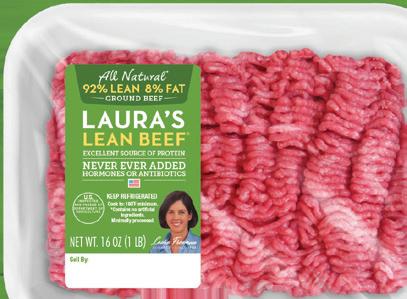

















GROUND BEEF *Minimally processed. No artificial ingredients. NEVER EVER ADDED HORMONES OR ANTIBIOTICS LAURASLEAN.COM TRUSTED SINCE 1985 Provide your customers with a wide range of products from the All Natural beef brand they trust the most! ** IRI - latest 52 weeks ending June 12, 2022
Current Considerations
CONSUMERS WEIGH SUSTAINABILITY, HEALTH AND CONVENIENCE WHEN PURCHASING SEAFOOD, WHILE PLANT-BASED PRODUCTS MAKE A PLAY FOR THEIR PIECE OF THE FISH PIE.
By Bridget Goldschmidt
omething fresh is happening in the seafood department of Town & Country Markets. In March, the Seattle-based independent with six stores across the Puget Sound region launched Maka, a new house-branded seafood line of ocean-friendly choices, including sushi, poké and rice bowls, as well as custom rolls and party platters.
According to Town & Country, the Asian-inspired line’s name means “fresh” and “beloved” in Hawaiian, representing the grocer’s commitment to providing the freshest and most delicious producti available. It also sounds similar to the Japanese word maha, which means “great” — a reference to the expertise and creativity of the sushi chefs who developed the offering.
Above all, however, Maka reflects one of the grocer’s core values: its commitment to sustainability. The line adheres to the Monterey Bay Aquarium’s Seafood Watch recommendations for sustainably produced seafood, which aim to ensure a bright future for the world’s fish population and for those who fish for a living. Beyond the Maka offering, Town & Country plans “to advance its seafood market and its sustainability practices throughout 2023,” according to a company spokeswoman contacted by Progressive Grocer.
Speaking of sustainable sushi, Charlotte, N.C.-based Hissho Sushi, whose products are carried by such food retailers as Target, Sprouts, Walmart, Giant Food and Meijer, revealed ahead of Earth Day on April 22 that 100% of the seafood used in its products is transparently certified sustainable by an independent third party and traceable to producers and vendors that comply with strict standards for food safety and quality.
Advisory firm ResilienSEA Group LLC worked with the second-largest U.S. sushi provider to ensure that all of its purchases were being made from responsibly managed wild-capture and farmed sources. Austin, Texas-based ResilienSEA also helped Hissho establish strict supplier guidelines, which include eliminating species that are under threat, among them baby octopus, eel and mackerel.
“Responsible sourcing generates positive, long-term impact for our consumers, our industry and the environment,” said Hissho CEO Dan Beem last month, adding: “Looking toward the future, we hope that sourcing practices will improve for these items and we can add them back on the menu. Our retail partners’ customers have sophisticated palates, but they are also responsible consumers. Through feedback, they have largely told us that it’s important to them to understand where their food comes from and to protect the environment.”
Key Takeaways
Sustainability and health remain key concerns for seafood shoppers, suppliers and retailers.

Despite pandemic-era lockdowns that helped many consumers grow more comfortable cooking seafood at home, they still desire convenient frozen and ready-tocook product options.
Plant-based seafood brands contend that a declining seafood supply, sustainability considerations and physical health are key reasons for people to switch to their products.
48 progressivegrocer.com SOLUTIONS Seafood
Convenience Counts, Too
Seafood is more than just sushi, of course, and other trends besides sustainability factor into consumers’ seafood purchasing decisions. According to FMI’s 2023 “Power of Seafood” report, while 66% of seafood shoppers care about buying sustainable seafood, 69% cite nutrition/health as a primary or very important reason that they eat seafood; this metric rises to 81% among frequent seafood consumers.
Additionally, despite the fact that pandemic lockdowns prompted more consumers to prepare seafood at home and gain more confidence in their ability to cook it, convenience is still a must for many, especially as people return to in-person work or school and have less time to make their own meals. To that end, although seafood shoppers say that they prefer fresh products, they acknowledge that frozen items offer several benefits, including a greater variety of choices, the avoidance of food waste, and handy preparation instructions. Indeed, 39% of seafood consumers surveyed by FMI note that frozen seafood is just as good as fresh, six percentage points higher than those who believe it’s not as good.
“Consumers want convenience with their food, due to busy schedules and hectic lives,” asserts Yasmin Curtis, founder and CEO of Two Fish, a Chicago-based restaurant-inspired brand that recently launched three new frozen seafood boil bags. “Frozen foods are convenient for handling preparation and desired portion sizes.” Two Fish got its start as a storefront crab shack in the close-knit Windy City neighborhood of Bonneville, where satisfied customers spread the word and helped the company kick-start its first retail showcase.
In April, Hissho Sushi revealed that 100% of the seafood used in its products is transparently certified sustainable by an independent third party and traceable to producers and vendors that comply with strict standards for food safety and quality.
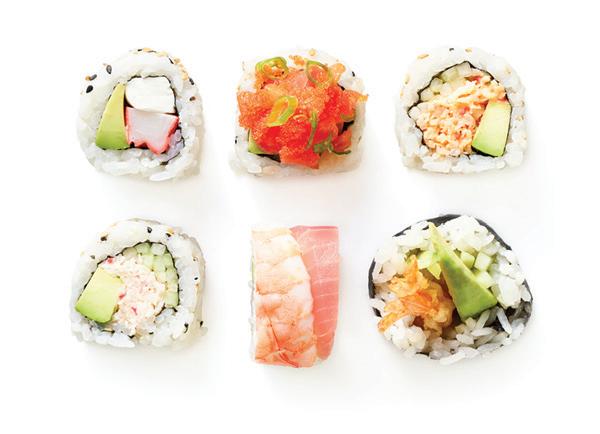
“Being able to introduce Two Fish at our first grocery store was a huge success,” notes Curtis. “The reactions we got from customers were very positive, and we even sold out of our product within the first 20 minutes we opened our display!”
Besides cultivating a loyal fan base, Curtis cites social media as “a huge part [of] advertising — Instagram, Twitter and Facebook are still and will always be the place for news, whether it’s a new product or a social event. People pay attention and love new food trends, and we can play on this, sharing fun, new ways to prepare and enjoy seafood to keep up with our audience.”
Every Two Fish seafood boil bag contains snow crab legs, shrimp, mussels or crawfish, along with corn and potatoes, accompanied by Two Fish’s popular “3 The Chi Way” sauce.
From Delivery to Grocery
In the ready-to-cook space, no-fuss options are also a priority. “We’re seeing convenience in cooking seafood continue as a trend,” affirms Kathy Liz, CMO of Osh n, a fresh and frozen sustainable salmon delivery service from Miami-based parent company BluGlacier. “Salmon continues to be a priority in the seafood industry, and having easy, savory options is important.”
In March, Osh n launched three marinated salmon selections — lemon pepper, garlic dill and sweet chili — at 20 Mariano’s locations across the Chicago area, marking the first time the salmon brand is offering products in grocery stores. According to BluGlacier and Osh n CEO Sebastian Goycoolea, “We teamed up with [Mariano’s] flavor specialists to create new marinated flavors that we know customers will love.”
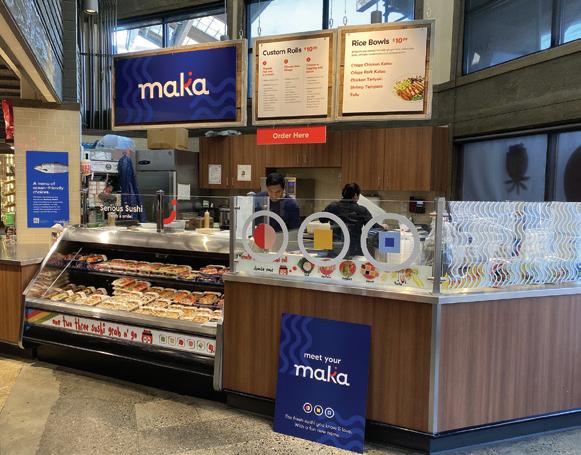
So far, the marinated products have “been very well received, and we are excited about seeing further growth,” notes Liz. “We are working on expanding our ready-to-cook offerings in the near future.”
Asked about marketing such products in the grocery channel, Liz observes: “Raising product awareness is paramount in retail. Doing so through in-store
PROGRESSIVE GROCER May 2023 49
Seattle-based independent grocer Town & Country Markets recently launched Maka, a house-branded seafood line of ocean-friendly choices.
“Salmon continues to be a priority in the seafood industry, and having easy, savory options is important.”
—Kathy Liz, Osh n
TOTALLY UNIQUE TO THE CATEGORY



SEAFOOD DIFFERENTLY!
INTRODUCING DAY’S CATCH FROM AQUAMAR, THE 1ST TRUE SEAFOOD DEPARTMENT INNOVATION IN YEARS!








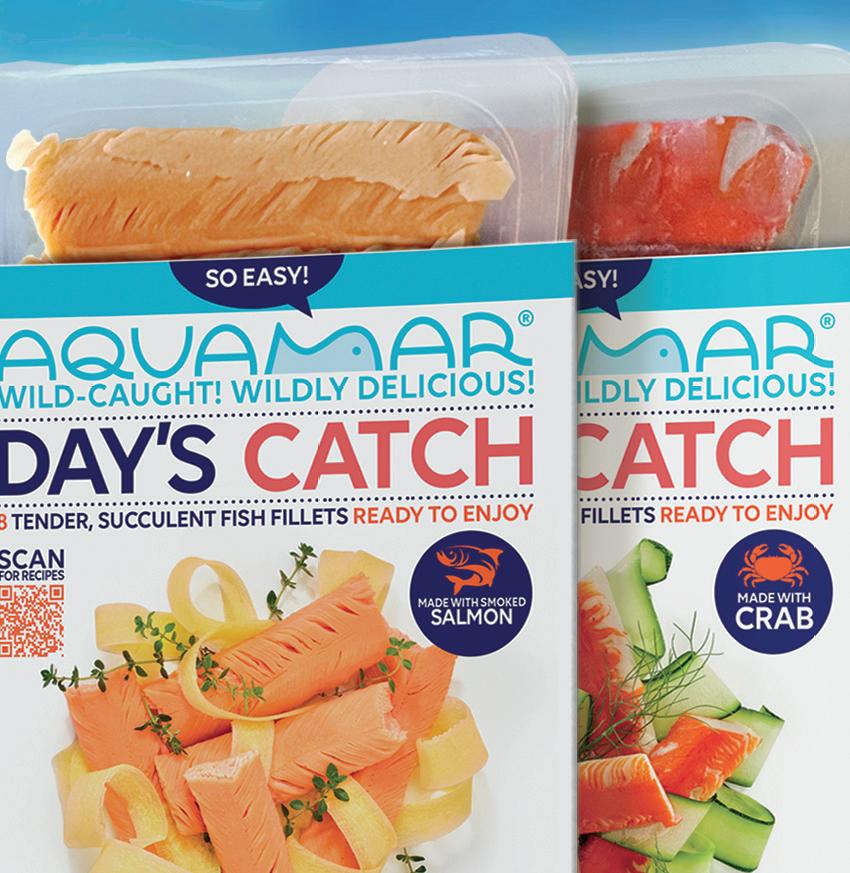

SCAN HERE! No, you’re not imagining things! Finally someone’s bringing true innovation that addresses consumer reluctance to enjoy more seafood at home. is a convenient new line of RTE seafood that’s poised to disrupt the category and make your department a desination for easy-to-enjoy protein deliciousness. Contact Amin Nabli at amin.nabli@aquamar.net for a cutting of this cutting edge fare.


IT’S A FACT: Your
Customers Want To Eat More Seafood

The Ones that Got Away
Mention cooking fish at home to shoppers, and they'll more than likely confess that, while they want to eat seafood in the comfort of their home more often, they're intimidated by the idea. The most common reason people give for not enjoying more seafood at home is that they find the prospect of preparing seafood confusing and fraught with potential challenges. After all, they deal with inconveniences every day. Why add more?
For that reason, 47 percent of seafood consumption today happens at restaurants. And while people recognize the health benefits of seafood as a source of high-quality protein, they eat less of it than they should. In fact, the USDA's "Dietary Guidelines for Americans" recommends that consumers eat seafood at least twice a week, given its numerous health benefits. But access to a nutrient-dense protein like seafood can be difficult for some.¹
A Legacy of Innovation
At Aquamar, we believe that everyone should have easy access to healthy protein., so we've long focused on value-added seafood, and that led us to invest in better understanding the barriers to increased seafood consumption at home. Day's Catch—the only fully cooked, refrigerated product of its kind in the category—is just the first manifestation of that investment, with more to follow.
This breakthrough new offering makes it easy to enjoy seafood options that are healthy, delicious, and, most importantly, void of the hassle of preparing fish in the kitchen. For retailers, this innovative new line means adding significantly to their share-of-wallet with an $8 billion opportunity that won't eat into other parts of their business.²
Day’s Catch is Seafood Simplified
Available in four popular flavors—smoked salmon, smoked haddock, cod, and crab—Day's Catch is an approachable line of premium, fully cooked, readyto-eat seafood fillets that's poised to disrupt the "I'll just eat my seafood at a restaurant" mindset and get retailers in on that $8 billion bonanza (the incremental opportunity that’s currently lost to foodservice).
One reason the Day's Catch line of RTE seafood is so delicious is that it's 100% wild-caught—an attribute that's increasingly important to consumers. Research shows they prefer wild-caught over farm-raised by more than a 2:1 margin.²
When you weigh the benefits of Day's Catch, retailers have an opportunity to deliver delicious seafood that people can enjoy at home with little preparation, and they never have to be intimidated again.
Aquamar is Serious About Support
To help raise consumer awareness and drive purchase intent, Aquamar has combined high-impact marketing and merchandising with end-toend sales support. Along with advertising and purchase incentives, the company has impactful in-store merchandising and even has an industryfirst seafood department training program that's free for the asking. We want our retail partners to begin to realize their fair share of that $8 billion right away!
For more information about how Aquamar can help your store provide delicious and sustainable seafood products to customers, visit
¹U.S. Department of Health and Human Services and U.S. Department of Agriculture, 2020 – 2025 Dietary Guidelines for Americans, 2020. ²FMI, The Power of Seafood 2023, 2023.
ADVERTORIAL
signage that is in alignment with placement, and supporting that outside of the store, is important so consumers recognize your product with the promotions they see outside of the store.”
She also hearkens back to an earlier-mentioned shopper concern: “Understanding how their food is raised continues to be a priority for consumers; with that, understanding certifications and their seafood having third-party certifications [are key.] Going forward, continued ways of understanding where their food sources are coming from and making the cooking and eating process simple” will be highly important for seafood consumers.
Plant-Based Makes Its Pitch
Meanwhile, in the plant-based seafood segment, innovation continues apace. In center store, for instance, Mind Blown has recently launched Plant Based Shelf Stable Sea Scallops on the brand’s website.
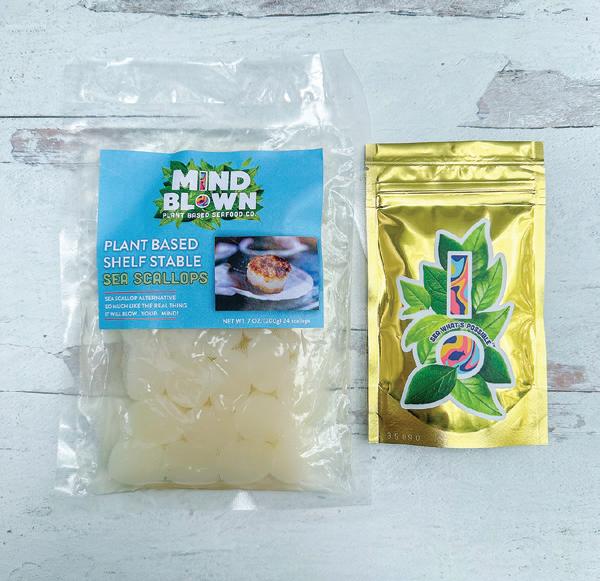
“They are a true game-changer in the world of sustainable seafood,” says Shelly Van Cleve, co-founder and VP of innovations at Grimstead, Va.-based Mind Blown. “Not only do these scallops boast an authentic taste and texture that rivals that of their ocean counterparts, but they also offer significant benefits to the planet. By eliminating the need for refrigeration and reducing reliance on the cold chain, these scallops have a dramatically reduced carbon footprint. Furthermore, they alleviate the pressure on declining marine populations and reduce food waste.”
The brand doubles down on its dedication to sustainability by donating a portion of its profits to The Coral Restoration Foundation, based in Tavernier, Fla., in support of its work to rebuild coral reefs around the world. “By choosing Mind Blown products, you’re not only
making a healthier choice for yourself, but you’re also contributing to the revitalization of our oceans,” asserts Van Cleve. “Our ultimate goal is to relieve, restore and revive the health of our oceans, leaving behind a legacy of abundance for future generations to enjoy.”
Another compelling argument in favor of plant-based seafood alternatives, according to Van Cleve, “is the high cost of traditional seafood. For instance, a pound of locally sourced crab meat averages a staggering $50, while scallops can cost around $35 per pound. If the prices of chicken or hamburger meat were that high, it would be difficult for many communities to access them. Therefore, the goal should be to provide affordable options that are accessible to all.”
She predicts the likelihood “that we’ll soon see our favorite seafood dishes transformed into plant-based alternatives. In the near future, [plant-based] crab cake sandwiches, fries and coleslaw baskets may be a ubiquitous sight on menus at seafood restaurants, food trucks, seaside cafés and even stadiums. The trend towards plant-based offerings is rapidly gaining momentum, and it’s clear that it will soon become a standard feature of the culinary landscape.”
The ISH Company, which is currently in talks with large retailers, with the aim of launching in grocery stores in 2024, agrees that a declining seafood supply, sustainability considerations and physical health are key reasons for consumers to switch to plant-based options.
As for who’s most interested in such products, Christie Fleming, COO and president of ISH, observes that currently, “many Gen Zers and Millennials are turning to plant-based options for health, environmental or personal reasons. According to the National Institutes of Health, 85.2% of college students are willing to try more plant-based meat. While some universities offer Beyond or Impossible products, plant-based seafood is less available for those that want to try it.”
Fleming additionally highlights the fact that “[m]any consumers are also adopting a flexitarian lifestyle to limit meat intake and eat more plants. … Research from Sprouts Farmers Market found that 47% of Americans describe themselves as flexitarians, the identification proving even more popular in younger crowds. As this population moves more toward plant-based substitutes, the demand for plant-based seafood is rising.”
ISH’s products, which are currently available at foodservice, include Shrimpish, Salmonish, Codish, Crabish and Lobsterish.
52 progressivegrocer.com SOLUTIONS Seafood
Mind Blown recently introduced Plant Based Shelf Stable Sea Scallops, a product the company describes as "a real game-changer in the world of sustainable seafood."
“The trend towards plant-based offerings is rapidly gaining momentum, and it’s clear that it will soon become a standard feature of the culinary landscape.”
—Shelly Van Cleve, Mind Blown
Building the Perfect Produce Department
UNFI’S DORN WENNINGER OFFERS ADVICE ON MAKING THIS KEY STORE DEPARTMENT AN IRRESISTIBLE LURE FOR CUSTOMERS.
By Bridget Goldschmidt
rogressive Grocer recently caught up with Dorn Wenninger, SVP of produce at Providence, R.I.-based UNFI, to find out how to show off fresh fruits and veggies to their best advantage. The conversation ranged from preferred fixtures and lighting to effective signage to pro tips on arranging produce for maximum appeal to customers.
Progressive Grocer: Why is optimal produce presentation in retail stores important?

Dorn Wenninger: Customers value quality and freshness above all else, and the display in-store is what either delivers against that expectation or leads to disappointment. I’ve always stressed the importance of “space to sales” when it comes to
The objective in the produce department is to allow the product itself to be the hero, according to UNFI’s Dorn Wenninger.
PROGRESSIVE GROCER May 2023 53 FRESH FOOD Produce






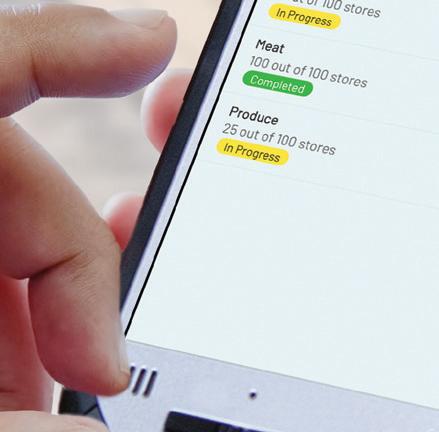




Optimizing Merchandising and Replenishment in Fresh
Fresh is the department that drives customers to your store; it also is a unique department with unique challenges, including how to manage merchandising and replenishment operations to realize growth and optimize incremental savings. Progressive Grocer asked Andrew Isherwood, Senior Product Manager at Invafresh, to explain how the company’s innovative technology platform can help retailers automate processes, enhance decisionmaking, and engage in flexible planning to help achieve those goals.
Progressive Grocer: Why is automation such an important component of merchandising and replenishment?
Andrew Isherwood: Data is key to leveraging AI and redefining processes for automation. When managing store replenishment of fresh products, it is imperative for calculations and optimizations to be done automatically. Why? Just think about the factors influencing demand and replenishment: weekday variation, seasons, weather, promotions, delivery schedules and day-level probabilities of waste and stock-outs. It is impossible for any human to keep track of all those things! Actions such as markdowns, inventory counts, and promotions must be done in real-time, from the floor — so a solution that supports time-dependent data is key for productivity.

PG: How can technology help enhance decision-making through added visibility?

AI: Our technology uses the power of AI to create accurate demand forecasts, while automated replenishment enables more visibility into current and future inventory. Not only does this help with merchandising your store — it also can open a window into the costs of resources. For example, how many people do you need to schedule to receive, pick and merchandise your store? For retailers — especially those struggling to adequately staff their stores — this technology is invaluable.
PG: Let’s talk about flexible planning. Why is it so important and how can the Invafresh platform enhance the process?
AI: Fresh products must be available perfectly in sync with

demand. That means forecasting must be as flexible and accurate as possible. The importance of prepared food is growing. Shoppers are looking for items they can grab quickly — prepared sandwiches, for example.
Now let’s consider the steps involved in making those sandwiches. It takes multiple ingredients to make each one — bread, meat, cheese, lettuce. So, retailers must accurately predict demand for the sandwich and for the ingredients needed to produce it. Then they must manage multiple production cycles and coordinate everything between various departments to get the right number of sandwiches to the floor.
But how can they predict that number when there is such fluctuation in the way consumers shop?
In the summer, your customers might want something crisp and fresh, while in the winter they might crave something warmer, like a hot roast beef sandwich. And it is more than seasonal; something as simple as a slight change in the weather — is it sunny or rainy? — can influence what they buy. That makes it almost impossible to accurately forecast demand based on seasonality alone.
That is where AI comes in. Forecast engines leverage AI’s power to translate estimated demand for end products into estimated demand for the ingredients needed to make them. AI can help manage and co-ordinate production cycles across different departments, too. With the right system, you’ll know how many sandwiches to make, when to make them, and the ingredients needed from each department. You’ll also be able to build out multiple production cycles that start at different times. And with solutions accessible from a mobile device such as a tablet on the store floor, employees no longer need to run back to the computer in the office, or run between departments, printing and sharing messy paper sheets.
PG: Is there anything you would like to add — something you would like grocery retailers considering a technology investment to know?
AI: A simple Google search for inventory management software will bring up dozens of vendors. However, not every product is created equally. Grocery retailers explicitly looking to optimize their fresh food inventory management need to ensure the software they choose has specialized tools for tracking and managing fresh food inventory. The world of fresh is entirely different from any other form of retail and thus requires a particular set of features and expertise.
Want to know more? Download the Invafresh Guide to Flexible Planning at invafresh.com/planning.

ADVERTORIAL
SPEAKING WITH ANDREW ISHERWOOD , Senior Product Manager, Invafresh
displays. If your display looks great but requires four days of sales for the product, then some of that produce will be four days old by the time it’s sold. Figuring out how to make impactful displays with one day of sales volume is the trick. If the display is too big, it requires culling, which in today’s labor environment is challenging and costly. Great merchandisers utilize pyramids, upside-down RPCs [resusable packaging containers] and other supports to create optics of abundance with the right volume to encourage sufficient turns.
Stores tend to be very sophisticated about their modulars in the center of the store: how many facings, adjacencies, holding capacity and level of the shelf. My best results have been combining that level of discipline and analysis from the center of store and overlaying it onto the complexity of produce. As much as great produce merchandisers are artists, a best-in-class merchandiser combines their expertise with data.
PG: What roles do fixtures and lighting play in optimal produce presentation?
DW: Light is good! Produce is natural. The objective in the produce department is to allow the product itself to be the hero, so we want the shopper to be able to see it.
Fixtures should show off the produce. It’s important to give good lines of sight across the department to show off the colors and freshness. Shoppers should be able to easily pick up and choose the product they want. Investing in modern, refrigerated islands or chilled center-of-department fixtures is well worth it, as it allows for showcasing of refrigerated product beyond just the wet wall.
PG: How does signage help entice shoppers to choose certain produce items, and how should signage be deployed in the produce department for maximum effect?
DW: I’m a fan of price impression on seasonal items immediately upon entering the store/department. Regardless of the socioeconomic level of your shopper, setting a tone of value drives more sales. It’s good to find a half-dozen items that you’re really proud about the price [of] and make a statement with it. In fact, sometimes, with too many large pricing signs, you lose value on the ones that matter the most. At the same time, make sure you’re getting credit for those items with which you’re driving excitement and volume.
Given that 12% of produce sold at retail in the U.S. is organic, I’m a fan of very clear and easy-to-read and -identify organic signing. The USDA Organic label is well known and sends quality cues about the produce overall, even to the nonorganic shopper.
PG: How does seasonality play into produce presentations, and how should retailers use it?
DW: In some ways, it’s obvious to have apples in the fall, berries at Easter and corn on the 4th of July. That being said,
produce is one of the easiest places to make a statement in the store. Produce tends to be the first thing shoppers see and therefore sets the tone. Seasonal floral is a great way to open, and it doesn’t even need to be big floral displays. Even for “nonfloral” stores, I suggest red roses for Valentine’s Day and Mother’s Day to set the environment of the store. Small floral sets can be used year-round, with seasonal colors as an important enhancement.
I tend to also think of seasonality from a grower’s perspective. When a crop is in season, it tends to be at its best quality and at its best price. Driving price impression isn’t only about making the shopper “feel” the season. It’s also about leaning heavily on volume items when they’re at their best. For example, citrus is at its best quality and value in January, while apples are in October and watermelons are in July.
PG: How should particular fruits and vegetables be arranged/displayed for maximum appeal?
DW: Longtime produce gurus always teach to color stripe, and I’m no exception. Strong color breaks, instead of large blocks of single colors, make a wet wall or side counters visually pop from afar. I take particular note of a produce department from a macro level when I walk into the department. I look at the sight lines, color breaks, price impression, seasonal statements and quality cues.
With an increase in packaged produce, I also think about how a store can use “naked” or unpackaged products for prominent displays, to build on the quality impression.
Spend time thinking about the daily sales of each item. Too small a carrying capacity, and your associates will be stocking too frequently in the day and you’ll have unnecessary out-of-stocks. Too large, and you’ll see the product sit too long, risking poor quality or excessive labor requirements to cull the display.
PG: What kind of results can retailers using optimal produce presentation practices expect, and why?
DW: We should always measure our sales versus the rest of market; that is to say, am I growing faster than my competitors? I’m passionate about evaluating this, as it tells you how your shoppers view your value proposition versus your competitors. Displays, along with assortment, pricing and overall quality, are critical in taking market share. Done right, your produce presentation will help improve and highlight your assortment, pricing and quality.
56 progressivegrocer.com FRESH FOOD Produce
“As much as great produce merchandisers are artists, a best-inclass merchandiser combines their expertise with data.”
—Dorn Wenninger, UNFI
Summer Wine and Beer Review
LEARN HOW BEST TO MARKET AND MERCHANDISE NEW DRINK OFFERINGS FOR RETAIL SUCCESS.
By Marian Zboraj
ummertime is nearly upon us, and that means longer days and warmer weather are giving drinking-age consumers more options for at-home entertaining – everything from hosting boozy brunches with the latest wine releases to backyard barbecues with plenty of brewskis on tap. Regardless of the activity, grocers need to get ready to quench the thirst of wine and beer drinkers during the hot summer days.
Raising a Glass to Good Times
From Memorial Day to Labor Day, summer is filled with holidays perfect for celebrating with adult beverages. For example, Chicago-based consumer insights company Numerator’s “2023 Alcohol-iday Preview” shows beer as the top alcohol for Memorial Day, Father’s Day, Independence Day and Labor Day. As consumers gear up for summer imbibing during these days, grocers can also have (sober) fun and get creative when marketing these holidays to the over-21 crowd.
In addition to marketing wine and beer in connection with holidays, hosting in-store drinking events is always a big hit. Last month, for instance, select Save Mart and Lucky stores in California’s greater Bay Area and Central Valley invited shoppers to meet a roster of the Golden State’s trailblazing women winemakers. Part of its in-store tastings during the newly created Women in Wine series, the event offered shoppers a unique opportunity to meet influential female winemakers who are leading innovation in the wine industry and to taste a selection of prizewinning local wines available at stores operating under the banners.
“This is an exciting opportunity for our shoppers to visit ‘wine country’ inside our stores and enjoy a fun and educational tasting-room experience while meeting creative and innovative women winemakers at their local Save Mart and Lucky grocery store,” says Jeff Feist, director of alcohol, wine and beer for The Save Mart Cos., based in Modesto, Calif.
Grocers can also emphasize the benefit of creating at-home happy hours as an alternative to dining out at restaurants, where consumers would undoubtedly spend more.

Cheers to the New
Another successful marketing tactic is spotlighting new or limited-edition products. There’s no shortage of seasonal varietals when it comes to wine and beer brands. Below are just a smidgen of new summertime sippers.
Wine Time
Premium boxed-wine brand Bota Box has launched its first limited-edition wine. The Bota Box Summer Release

Chenin Blanc & Viognier is made in a crisp, fresh style. The unique-blend wine balances the aromatic floral and stone fruit notes of Viognier with the juicy, bright citrus and pear flavors of Chenin Blanc.
“Summertime is all about being outdoors, and Bota Box’s lightweight, unbreakable wines go where glass can’t — whether that’s the beach, the pool or your next neighborhood barbecue. So introducing a wine that pairs perfectly with summer’s
Key Takeaways
From Memorial Day to Labor Day, summer is filled with holidays perfect for celebrating with adult beverages.
Beyond the holidays, hosting in-store drinking events is always a big hit.
Another successful marketing tactic is spotlighting new or limited-edition products.
PROGRESSIVE GROCER May 2023 57 BEVERAGES Wine and Beer
Wine and Beer
best moments is a natural move for Bota Box,” notes Andrew Blok, portfolio director of Manteca, Calif.-based Bota Box.
The wine is packaged exclusively in an eco-friendly 3-liter box, which contains the equivalent of four 750-milliliter bottles of wine.
“This limited-time offering allows us to enter an untapped territory with Bota Box’s white wine lineup, capturing new and existing consumers alike who are looking to discover a refreshing wine option from a trusted brand,” adds Blok.
In April, Livermore, Calif.-based Cupcake Vineyards released Citruskissed Pinot Grigio. Available nationwide, this crisp, medium-bodied and fruit-forward wine comes with prominent notes of lime and lemon zest.
“Building on the success of our pinot grigio and the rapid growth in flavor-forward pinot grigios, we’re excited to bring Citruskissed Pinot Grigio to the Cupcake portfolio,” says Cupcake winemaker Jessica Tomei. “The wine features notes of freshly squeezed citrus, mouthwatering Granny Smith apple, and a balanced minerality that leads to a crisp, refreshing finish.”
Citruskissed Pinot Grigio is made by combining grapes grown in California’s warmer climates with those grown in cooler climates to increase ripeness and retain bracing acidity, resulting in a more intense flavor profile.
Beer Me
In the beer category, SweetWater Brewing Co. recently launched Gone Trippin’, a West Coast Style India pale ale (IPA) that pays tribute to the bold, hoppy beers that SweetWater brought to the South more than 25 years ago.
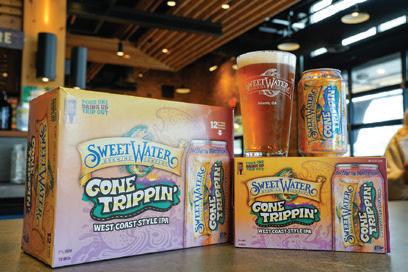
Gone Trippin’ (7% alcohol by volume, or ABV) is assertively hopped with Cascade, Centennial, Crystal, Chinook and Citra varieties. These West Coast hops deliver bitter notes accompanied by pine, citrus and floral aromas that are well balanced by a malty backbone and a refreshingly dry finish.
“We crafted this beer as a celebration of the long trip that’s taken us from the West Coast to the Southeast and back again — with many stops in Colorado. We’ve Gone Fishin’ and Gone Phishin’ for years, and now we’re Gone Trippin’. We’re getting back to our roots and absolutely stoked to release this hoppy love letter to Cali, wrapped in a funky tie-dyed can,” says Nick Nock, head brewer at Atlanta-based SweetWater. “Gone Trippin’ is a big yet easy-drinking beer that’s incredibly balanced. It’s perfectly bitter, it’s hoppy, but it’s also rounded out with a malty sweetness.”
San Francisco’s Anchor Brewing Co. continues its spirit of innovation with San Pancho, a craft Mexican-style lager with lime. The

super-refreshing brew is a celebration of the rich mural culture and arts tradition in the Bay Area. With zesty citrus, sweet corn and light maltiness, San Pancho is crisp and approachable, which the company says is ideal for easy drinking on sun-filled afternoons.
San Pancho takes its inspiration from the Mission District, one of the oldest neighborhoods in San Francisco and a notable center of the city’s Chicano community, long recognized for its bold murals, street art, popular taquerías and rich nightlife. Anchor’s brew team crafted the 4.9% ABV lager to capture that sense of place. San Pancho is brewed with lime, pale and flaked-corn malts, and Saaz hops for a well-balanced flavor profile and aroma.
“Anchor Brewing Co. has been at the forefront of craft lagers. We were drawn to the idea of a fresh and bright lager that’s distinctively San Franciscan and captures all the flavor and character you find in Mexican-style lagers,” says brewmaster Dane Volek. “The city’s Mission District pulses with energy, and we aspired to capture that verve through San Pancho, a beer that is vibrant, chill and easy to love, just like San Francisco.”
That vibrancy is also highlighted in San Pancho’s bold packaging. The artwork is inspired by the aesthetic and traditions of murals and paintings found throughout the Mission, as well as by historic works from renowned mural artists such as Diego Rivera, who created multiple pieces in San Francisco.
In expansion news, Tilray Brands Inc. has expanded access to Montauk Brewing Co., a fast-growing craft brewer in the metropolitan New York area. Montauk Brewing is now available in more than 3,500 points of distribution in the Northeast, specifically across New York, New Jersey, Connecticut and Rhode Island, including national retailers like Target, Whole Foods Market, Trader Joe’s, Stop & Shop, King Kullen, Walmart, Wegmans, 7-Eleven, Costco and BJ’s. Among Montauk’s summertime craft beers available to a wider consumer base are Wave Chaser IPA, Summer Ale and Watermelon Session Ale.
In 2022, Montauk expanded its portfolio of products to include 19.2-ounce cans and launched Ocean Series, a higher-end 6-pack. This year, in addition to its seasonal classics, the company is further expanding with opportunity styles and larger case sizes that have won on a smaller scale, meeting industry trends and consumer needs.
58 progressivegrocer.com BEVERAGES
The latest release from SweetWater Brewing is Gone Trippin’, an IPA featuring West Coast hops that are accompanied by pine, citrus and floral aromas, which are balanced by a malty backbone and a refreshingly dry finish.
Bursting with zesty citrus, sweet corn and light maltiness, Anchor Brewing’s new San Pancho is crisp and approachable, ideal for easy drinking on sun-filled afternoons.




B . Email sales@buzzballz com to learn more ©2023 BuzzBallz LLC, Carrollton, TX Please Enjoy Responsibly ©2023 Southern Champion, Carrollton, TX Please Enjoy Responsibly
Electric Vehicle Charging Stations
Leading the Charge
FOOD RETAILERS ARE IN THE FOREFRONT OF COMPANIES EXPANDING THE NETWORK OF CHARGING STATIONS FOR ELECTRIC VEHICLES.
By PG Staff
ith the Biden Administration earlier this year revealing plans to create a convenient and reliable electric vehicle (EV) charging network for the approximately 3 million cars of this type currently on the road — a number that the government would like to see grow — food retailers have become important partners in this effort. After all, their parking lots provide convenient places for consumers to charge their cars while they pick up necessary items on their regular shopping trips. Plus, it gives these companies the chance to highlight their commitment to sustainability.
Among the major players, Bentonville, Ark.-based Walmart, with close to 5,000 U.S. locations, has revealed plans to build its own electric vehicle (EV) fast-charging network at thousands of Walmart and Sam’s Club locations throughout the United States by 2030. This would be in addition to the nearly 1,300 EV fast-charging stations that the company already offers at more than 280 U.S. facilities. The goal,
Key Takeaways
Food retailers are important partners in the effort to create a convenient and reliable electric vehicle (EV) charging network, which also allows them to tout their sustainability efforts.
Big food retailers increasing their number of EV chargers include Walmart, 7-Eleven, Kroger and Meijer. Smaller regional players, including Fareway Stores and Tops Markets, are also getting into the EV charging act.

60 progressivegrocer.com EQUIPMENT & DESIGN
Walmart, which recently revealed plans to build an EV fast-charging network at thousands of Walmart and Sam’s Club stores by 2030, already offers more than 1,000 EV fast-charging stations at 280-plus locations.















X D www.cartveyor.com (414) 352.9000 LEARN MORE Transports shopping carts between floor levels Accommodates high shopping cart traffic Delivers an uninterrupted customer journey H S F & FF C W S SH G C S
Electric Vehicle Charging Stations

according to an early April blog post by Vishal Kapadia, SVP, energy transformation, is “to make EV ownership more accessible, reliable, convenient and affordable for [customers and members] across the country.”
Added Kapadia: “With a store or club located within 10 miles of approximately 90% of Americans, we are uniquely positioned to deliver a convenient charging option that will help make EV ownership possible whether people live in rural, suburban or urban areas. Easy access to on-the-go charging is a game-changer for drivers who have been hesitant to purchase an EV for concerns they won’t be able to find a charger in a clean, bright and safe location when needed.”
Similarly, massive c-store chain 7-Eleven has introduced 7Charge, a network of fast-charging stations that will be installed at locations throughout the United States and Canada. The charging stations will be added to 7-Eleven properties that are staffed 24/7 and located in “often traveled corridors,” according to the Irving, Texas-based company, which has more than 13,000 stores in North America. Drivers with station-compatible EVs can use a credit card at the charger or pay via the 7Charge app. Depending on state laws, prices are based on energy consumed and/or time spent charging.
Several 7Charge stations are already in place in Florida, Texas, Colorado and California. The system will also be up and running at more locations across 7-Eleven’s banners that also include Speedway and Stripes stores. 7-Eleven contends that once the installations are complete, this will be one of the largest and most compatible EV fastcharging networks offered by any North American retailer.
Meanwhile, The Kroger Co., which operates almost 2,800 retail food stores under a variety of banner names, has tested and phased in charger installations in partnership with Blink, Electrify America, EVgo, Tesla and Volta to bring hundreds of charging stations to stores in select markets across the country.
“Increasing our customers’ access to EV charging stations at convenient Kroger locations supports our collective transition to a lower-carbon economy,” noted Yael Cosset, SVP and CIO at the
Cincinnati-based grocer, last June. “We are leveraging technology and innovation to reduce our greenhouse-gas emissions and are offering customers easy ways to live a more sustainable lifestyle.”
Charging options offered by Kroger range in versatility, allowing compatibility among most vehicles, including many direct-current (DC) fast chargers. Charging times can vary from as few as 10 minutes, with most sessions averaging about 30 minutes per vehicle.
For its part, Meijer Inc. notes on its website that it continues to grow its charging offerings in partnership with companies such as Tesla and Electrify America, with the Grand Rapids, Mich.-based retailer currently offering EV chargers at more than 20% of its stores, as well as at two offices and a distribution center. Customers of Meijer, which operates more than 400 supercenters, neighborhood markets and Express locations in six states, can use the Greenlots or ChargePoint mobile apps to gain access to charging stations not owned by Tesla or Electrify America.
Small(er) but Mighty
It’s not just the big guys, though. Smaller regional food retailers are also touting their rollout of EV charging stations.
For instance, as the number of EV-charging stations expands across its home state, Boone, Iowa-based Fareway Stores Inc., with 130-plus locations in the Midwest, is hosting fast-charging stations at several of its stores, including Adel, Clive, Cresco, Des Moines (Fleur), Knoxville, Norwalk, Sheldon and Sioux City, with more on tap. Primarily situated along highways, these stations are intended to serve traveling motorists.
“We are proud of our tradition and commitment to conserve natural resources,” said Fareway CEO Reynolds W. Cramer ahead of Earth Day in April. “By partnering on additional energy efficiency initiatives, we are helping build stronger communities and provide direct benefits to our customers and area residents.”
Additionally, in a collaboration with Evolve NY and The New York Power Authority, Williamsville, N.Y.-based Tops Markets LLC, which operates 149 stores in three northeastern states, revealed in April that it had debuted its first high-speed EV charging hub at its LaGrangeville, N.Y., store, with EV-charging stations now also available in Williamsville, Rhinebeck and New Paltz in the Empire State. The grocer is currently involved in talks with Tesla and other vendors to add new EV charging stations in New York state’s Erie, Livingston and Cattaraugus counties.
“Tops’ EV charging stations are environmentally conscious and convenient, and tie perfectly into Tops’ sustainability efforts and mission, reducing environmental waste and energy consumption, all while providing our customers with sustainably sourced, high-quality products,” observed Kathy Sautter, the company’s public and media relations manager, last month.
Other food retailers that have rolled out EV charging stations include Albertsons, Giant Food, Save Mart, ShopRite and Target.
62 progressivegrocer.com EQUIPMENT & DESIGN
“With a store or club located within 10 miles of approximately 90% of Americans, we are uniquely positioned to deliver a convenient charging option that will help make EV ownership possible whether people live in rural, suburban or urban areas. Easy access to on-the-go charging is a game-changer for drivers who have been hesitant to purchase an EV for concerns they won’t be able to find a charger in a clean, bright and safe location when needed.”
—Vishal Kapadia, Walmart
Greater Expectations
SELF-CHECKOUT IS EVOLVING TO MAKE THE PROCESS AS SEAMLESS AS POSSIBLE FOR CUSTOMERS AND RETAILERS ALIKE.
By Mike Duff
elf-checkout is undergoing tremendous change as technology evolves and expectations rise both from consumers who want faster and more customized experiences and grocers that want to save labor and more effectively engage customers, so companies producing both hardware and software are adapting. Today, self-checkout in stores needs to be quicker and less prone to errors; however, many companies in the sector believe that no single self-checkout system will dominate food retailing and that tomorrow’s grocers will be providing more choice in how to finish a store visit.
Focus on Flexibility
With grocery changing fast, self-checkout has to evolve, according to Matt Miles, director, self-service business development, at Hudson, Ohio-based Diebold Nixdorf.
“Retailers are introducing new self-service concepts in sections of the store beyond the checkout area, such as foodservice ordering, deli ordering, smart carts and even cake customization,” says Miles. “Our customers are primarily fo-
Key Takeaways
Hardware and software developers in the self-checkout space are adapting to meet customer and retailer needs.
Many self-checkout solution providers believe that no single system will dominate food retailing and that tomorrow’s grocers will provide more choice.
Flexibility, customer engagement and reduced friction are major priorities in the self-checkout sector.
cused on making the consumer experience easier to increase basket size, removing friction in the journey to improve transaction throughput, and minimizing their overall impact on the environment. By introducing Vynamic\SmartVision Fresh Produce Recognition, we are reducing the time it takes to identify and select the correct item from the produce pick list.”
Diebold Nixdorf recognizes that grocery stores have to exist in and grow with a community and its expectations, so it focuses on choice flexibility in application.

“Modularity enables retailers to quickly and easily change configurations to suit different consumer journeys and find the optimal checkout experience,” notes Hudson. “Open cloud-native software makes it easy to integrate new systems into legacy store IT environments, adapt new technologies and applications, and support a smooth evolution of retail journeys.”
Based on feedback and its own experience, Diebold Nixdorf is “always looking to introduce solutions that enable retailers to support multiple journeys, leverage common platforms, and reduce costs of integration and/or ongoing support. As an example, we have recently released a solution that can, at the same time, support a fully assisted, fully self-service or semi-assisted checkout experience with one device, appropriately named DN Series Easy ONE.”
Upping Shopper Engagement
According to David Wilkinson, EVP and president at Atlanta-based NCR Commerce, today’s self-checkout systems have operational benefits that can help
PROGRESSIVE GROCER May 2023 63 TECHNOLOGY Self-Checkout
Toshiba gives consumers the option of hand-scanning their purchases.
ADVANCES IN SELF-SERVICE
The grocery industry is redefining self-service retail, encompassing a series of digitally enabled experiences that help shoppers tailor their journeys to their needs. Many who have yet to try self-service are now ready to do so, and their timing could not be better.
Shoppers want to move between touchpoints — digital and physical — seamlessly. In response, retailers need to knock down the walls that separate their channels, enabling shoppers to move seamlessly from online, to store, to mobile, to home delivery, and beyond.
SHOPPERS AND THE SELF-CHECKOUT EXPERIENCE
A shopper’s definition of what makes a great shopping experience is constantly changing. To get ahead and stay ahead, grocers need to understand and deliver the experiences shoppers want.
Whether they are looking for contactless payment, mobile shopping, curbside delivery, in-store ordering, traditional checkout, self-checkout, or any other shopping or payment method, you need the flexibility to scale and evolve.
WHAT’S NEXT FOR SELF-SERVICE?
Data shows that 41% ¹ of grocers currently offer self-checkout options chain-wide, while 27% ¹ are in the process of piloting or implementing it, and another 27% ¹ who have it in their future plans, leaving only 6% of grocers who have no plans to implement self-checkout. Not only is self-checkout here to stay, but its quickly evolving and adoption is expanding rapidly. But what are innovative grocery retailers implementing?

• L oyalty and Promot ions pr ograms to encourage customer retention
• Computer Vision A.I. to make self-checkout more convenient
• Mor e adaptable kiosks t o speed up checkout f or shopper s
• Digital wallets to offer mor e alt ernative payment options
The growing interest in self-checkout is clear. Retailers must adapt by delivering self-service experiences that give shoppers more control, resulting in less time spent in the checkout line. Customers want retailers to continue implementing selfservice options with technology that makes shopping easier, more informative, and more enjoyable.

Sources: 1 “State of the Industry: Food and Grocery,” Incisiv and Toshiba, October 2022


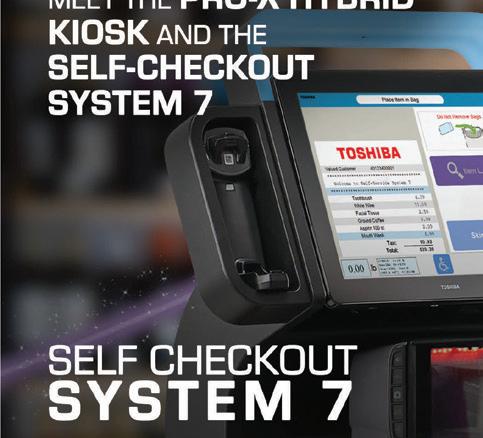

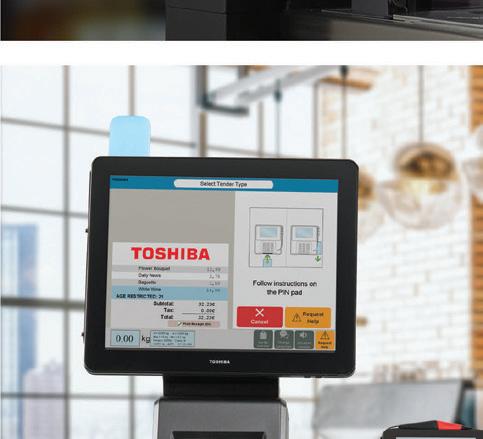


grocers deal with critical concerns.
“As labor challenges persist in grocery stores, grocers continue to look for ways to deploy the labor they have in the most productive ways,” says Wilkinson. “They also want to provide as little wait time as possible for shoppers. This has led to less cashiers in assisted lanes, and as many self-checkout lanes as a grocer can afford from both a financial and real estate perspective, with labor deployed in other areas. As this shift continues, it brings grocers both new opportunities and new threats. The new threats are generally related to shrink. ... Grocers are responding by deploying scalable artificial-intelligence (AI) technology powered by computer vision to identify these shrink events and avoid them. NCR has integrated this technology into the NCR Commerce Platform to make it easily available to customers.”
However, the shopper relationship is key, and evolving self-checkout systems can integrate more store functions, helping grocers strengthen bonds with customers.

“Shoppers can receive tailored offers and advertisements, or consume new services hosted on the self-checkout device: buy lottery tickets, buy crypto, consume financial services, etc.,” notes Wilkinson. “It also allows customers to self-scan in store aisles and complete transactions in self-checkouts. Grocers are looking for solutions that allow pluggability and extensibility to these types of services and allow seamless integrations into scan-and-go solutions. The NCR self-checkout solution integrates into the NCR Commerce Platform to support exactly these capabilities, including a market-leading white-labeled scan-and-go and e-commerce solution in NCR Freshop.”
NCR is addressing the bulk produce challenge with its Picklist Assist function.






“NCR Picklist Assist uses computer vision technology to identify the produce that has been placed on the scale and brings up a ranked list of most likely items for the shopper to choose from,” explains Wilkinson. “This solution reduces shrink and fraud as it detects whether a shopper is attempting to inaccurately select a produce item for a barcoded item. Our computer vision solution ... provides a faster, minimal-contact checkout experience. Primarily for smaller basket sizes, this solution enables a shopper to place their entire basket on
the self-checkout at once and instantly see those items on the self-checkout screen.”
Less Friction






Change is coming, but rather than replacing what’s already established, new self-checkout systems may primarily supplement them, at least for now.
“Retail is transforming faster as technology advances and consumers’ shopping expectations evolve,” says Frederik Carlegren, VP of marketing and communications at Durham, N.C.-based Toshiba Global Commerce Solutions. “Today’s consumers expect a fast, personalized and frictionless experience. Grocers need to embrace both the online and in-store experiences to appeal to generations of consumers.”
Carlegren adds that advancing technology makes self-checkout more convenient and easier to use, while also reflecting consumer experiences online.

“Today’s shoppers demand a seamless buying experience between digital and physical stores,” he observes. “Reducing friction during the shopping experience can make the difference between an enjoyable shopping experience and a frustrating one.”
Carlegren goes on to describe just how self-checkout and related technology can provide a simpler, more pleasant experience for shoppers.
“Computer vision-enabled self-service kiosks with produce recognition powered by [Toshiba Commerce’s] ELERA Produce Recognition can automatically and more accurately scan and validate multiple items simultaneously,” he says. “This technology increases scanning accuracy, reduces the need to input codes manually and reduces the need for intervention from store associates, making the self-checkout process a faster, friendlier and more innovative experience for consumers while supporting loss prevention and shrink. Food retailers are also offering various payment options ranging from traditional card payments to digital wallets and mobile payments that can be tendered using secured contactless tap and pay. By offering multiple ways for consumers to pay at self-checkout, shoppers can pay for their items with their preferred method.”
66 progressivegrocer.com TECHNOLOGY
Self-Checkout
“Today’s consumers expect a fast, personalized and frictionless experience. Grocers need to embrace both the online and in-store experiences to appeal to generations of consumers.”
—Frederik Carlegren, Toshiba Global Commerce Solutions
in-store experiences to
Diebold Nixdorf's DN self-checkouts can provide grocers with a fully assisted, fully self-service or semi-assisted checkout with one basic device that can be configured in various ways and even mounted on a wall.
Food, Beverage & Nonfood Products




Sweet Deal

Wholesum, a Fair Trade Certified grower and shipper of organic farm-fresh vegetables, has introduced a pack of Dolci Belles Italian sweet peppers as part of the company’s strategy to focus on organic greenhouse-grown varieties that bring an enhanced experience to the consumer. Italian sweet peppers have a distinctive long conical shape, a crisp texture and a surprisingly sweet flavor. Wholesum’s versatile peppers have firm but thin walls, with a small quantity of seeds that are clustered at the top rather than down the center, making the peppers a good choice for stuffing, roasting, sautéeing, and eating raw in salads and as part of veggie trays. Through multiple production trials paired with market insights to determine product viability, Wholesum’s team selected the top sweet Italian pepper varieties offering consistent sizing, shelf life, aesthetic qualities and, most importantly, flavor. Dolci Belles are available in 3-count bags of mixed red and yellow peppers, retailing for a suggested $4.79. Each bag sports an eye-catching, colorful design, in addition to a QR code with recipe ideas.

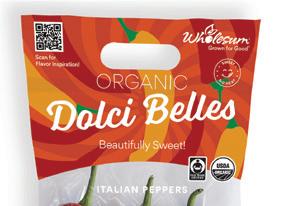
SpaghettiOs for Grown-Ups
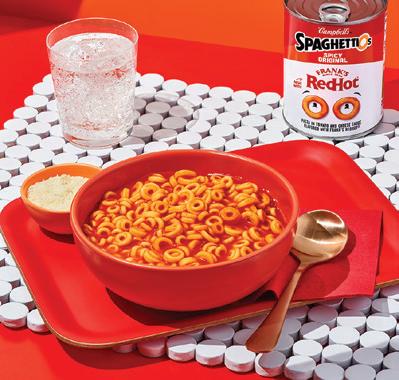
The result of SpaghettiOs’ flavor partnership with No. 1 U.S. hot sauce brand Frank’s RedHot is SpaghettiOs Spicy Original, which offers a more adult version of the venerable canned pasta line. Created for the 35% of grown-ups who already add some sort of spice to their SpaghettiOs, the Spicy Original product features a mild-medium heat level that adds a little kick to the eating experience. The product is available at retailers nationwide for a suggested $1.59 per 15.8-ounce can. SpaghettiOs is a brand of Campbell’s. https://www.campbells.com/products/ spaghettios/spaghettios-original/; https://www.franksredhot.com/en-us
Still Killin’ It
https://wh.farm/







































Dave’s Killer Bread, a maker of organic whole grain loaves, breakfast breads, English muffi ns, bagels and buns, is entering another category with its Organic Snack Bars. Boasting such quality ingredients as whole grains, seeds, nuts and chocolate, the nutritious soft-baked bars come in three fl avors: Cocoa Brownie Blitz, a vegan bar featuring organic chocolate chunks and the brand’s signature mix of seeds, and containing 16 grams of whole grains and 6 grams of fi ber; Trail Mix Crumble, offering organic chocolate chunks, fruits, almond butter and seeds while serving up 19 grams of whole grains and 5 grams of fi ber; and Oat-rageous Honey Almond, providing a generous 22 grams of whole grains and 5 grams of fi ber through such simple ingredients as organic rolled oats, organic honey and organic dry-roasted almonds. Last year, the brand did a soft rollout of the bars that was so successful that it moved ahead to launch them nationally. Four-bar boxes of any variety retail for a suggested $5.99, while individual 1.75-ounce bars go for a suggested $1.99 at retail. In common with all Dave’s Killer Bread offerings, Organic Snack Bars are Certifi ed USDA Organic and Non-GMO Project Verifi ed; contain no artifi cial ingredients, preservatives, colors or fl avors; and are free of high-fructose corn syrup and bleached fl our. https://www. daveskillerbread.com/
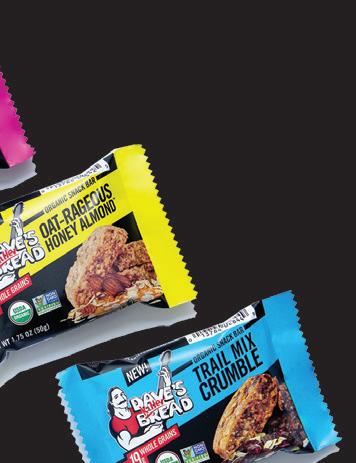
King-Size Rice Krispies Bars



Frankford Candy, known for manufacturing and marketing licensed confections and gifts, has teamed up with the iconic Kellogg’s brand on two king-size Kellogg’s Rice Krispies Candy Bars. Inspired by family-favorite Rice Krispies Treats, the Marshmallow-Flavored bar blends Rice Krispies cereal with creamy marshmallow candy, while the Strawberry-Flavored bar pairs Rice Krispies with fruit flavor in a creamy white candy. Frankford’s first licensed Kellogg’s product line to be available year-round, the single-serve 2.75-ounce candy bars have a suggested retail price of $2.49 each. https://www.frankfordcandy.com/; https://www.kelloggcompany.com/en_US/home.html

EDITORS’ PICKS
PROGRESSIVE GROCER May 2023 67
By Bridget Goldschmidt
Making the Most of Multicultural Marketing

AN EXPERT OFFERS POINTERS TO GROCERS UNSURE HOW TO CONNECT WITH DIVERSE CONSUMERS.
n this day and age of greater inclusivity, food retailers are often urged to adopt multicultural marketing programs, but many aren’t sure how necessary it actually is. Christena Garduno, CEO of Media Culture, a Dallas-based multichannel brand response media agency, dispels all doubt on that score.

“Recognizing that the country is more racially and ethnically diverse is essential,” asserts Garduno. “One hundred percent of the U.S. population growth has come from multicultural groups from 2016 to 2020, now making up 40% of the population. Responsibly marketing to these high-growth consumers offers a tremendous opportunity to gain market share. … From the economics standpoint, these diverse groups account for $4.3 trillion in buying power, according to the Selig Center for Economic Growth. If growth is a cornerstone of marketing, and diversity is driving growth in the U.S., grocers prioritizing multicultural marketing will maximize their business’ growth potential.”

Once a food retailer has committed to developing a multicultural marketing strategy, what barriers is it likely to face? “Connecting with a diverse consumer base poses a few challenges for grocers, such as language barriers, cultural differences, varying dietary needs, and accessibility,” notes Garduno. “To overcome the language barrier, grocers can take steps such as putting up bilingual signs, providing translation services and hiring multilingual employees. Additionally, grocers can cater to diverse cultures by offering a range of products that reflect their community’s ethnic foods, specialty products and traditional items. Hosting cultural events and cooking classes can also help build stronger customer relationships.”
Even with the best intentions, however, multicultural marketing efforts can fall flat if grocers aren’t careful. According to Garduno: “Inauthentic representation is one of the biggest mistakes: A study by Accenture found that 43% of consumers are more likely to switch brands if they perceive the brand’s diversity and inclusion efforts as inauthentic or ‘tokenistic.’ Consumers want to see brands that are genuinely committed to diversity and inclusion rather than simply using it as a marketing tactic. Unfortunately, these campaigns can also perpetuate stereotypes, be superficial or tone-deaf, or be culturally insensitive to diverse groups.”
Asked about best practices for a successful program of this kind, Garduno replies: “Multicultural marketing in grocery stores should offer promotions, products, displays, signage, circulars and staff training that cater to different cultural groups’ diverse needs and preferences. For instance, this can involve providing discounts on ingredients frequently used in Latino or Asian cuisine during cultural holidays, highlighting products in store flyers and displays that are relevant to different cultural groups, creating displays that highlight the diversity of the products offered, and
using inclusive signage that is culturally appropriate. Also beneficial is trained staff knowledgeable about the products and cultural practices of the communities they serve. … Grocers that feature diverse individuals in their marketing assets in a culturally relevant way are more likely to resonate with diverse audiences and see increased engagement and sales.”
As for what’s next on the multicultural marketing horizon, “retail media is an emerging channel for the marketing industry,” says Garduno. “Grocery retailers own the data on their customers, which can be leveraged to provide brands with a way to target diverse customers more effectively at the point of purchase. Retail media can offer grocery retailers an additional revenue stream, with a profit margin between 40% and 80%.”
The bottom line is that effective outreach to diverse shoppers is a win for all parties involved. As Garduno observes, “Overall, successful multicultural marketing that authentically promotes inclusivity and diversity will help drive growth and profitability and enable grocery stores to provide better experiences for all their customers.”
Bridget Goldschmidt Managing Editor bgoldschmidt@ensemleiq.com
68 progressivegrocer.com AHEAD OF WHAT’S NEXT
“Consumers want to see brands that are genuinely committed to diversity and inclusion rather than simply using it as a marketing tactic.”
—Christena Garduno, Media Culture
Polypropylene



Tamper Protection

Proven
Full Transparency
Sustainability
You will be ready as the shift away from black carbon plastics continues.* *usplasticspact.org

We strongly recommend that customers test products under their specific conditions to determine fitness for use.



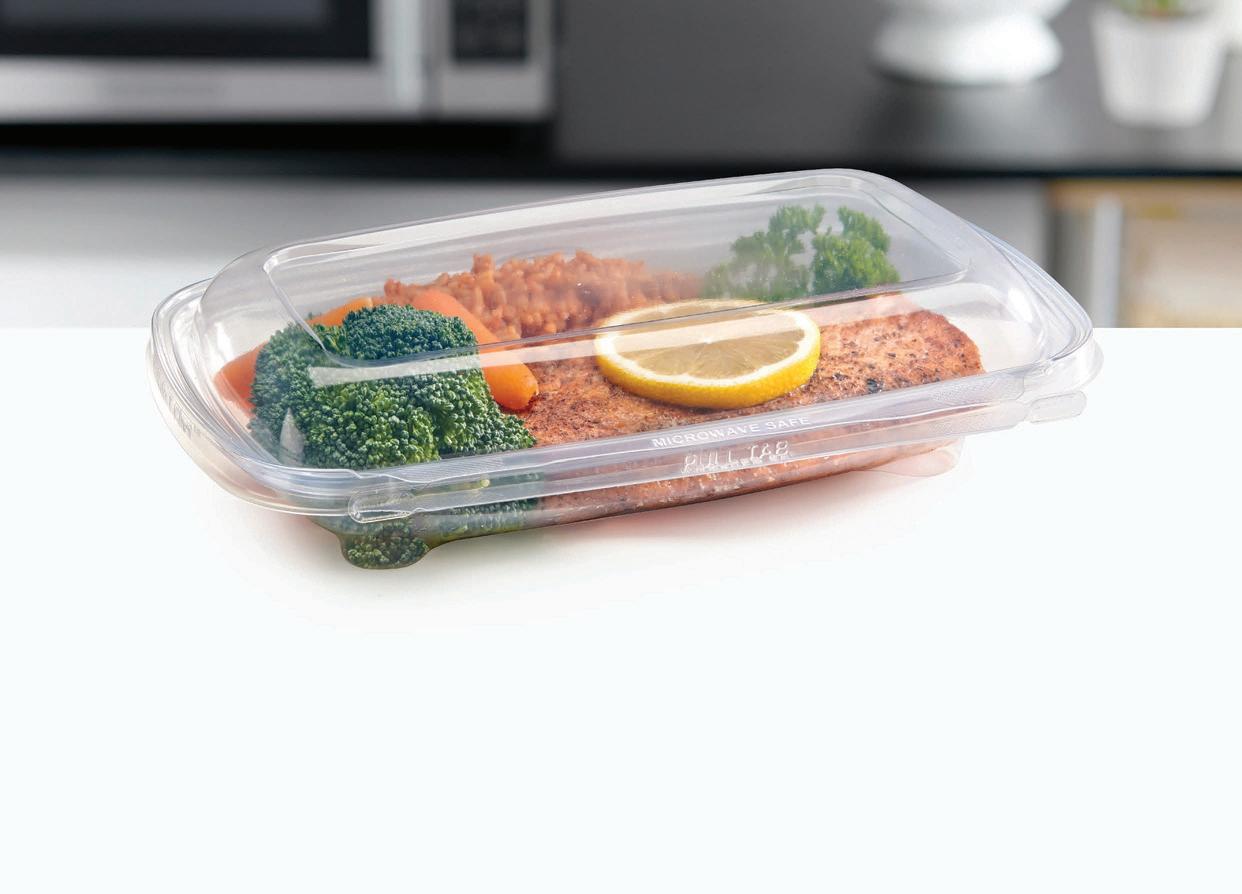
InlinePlastics.com/hot


consumer trust?
Crave
Packaging for Hot Food Applications
Scan to learn more
patented technology gives consumers confidence that food has remained sealed.
Great for delivery!
Exceptional clarity because shoppers like to see the food they buy.
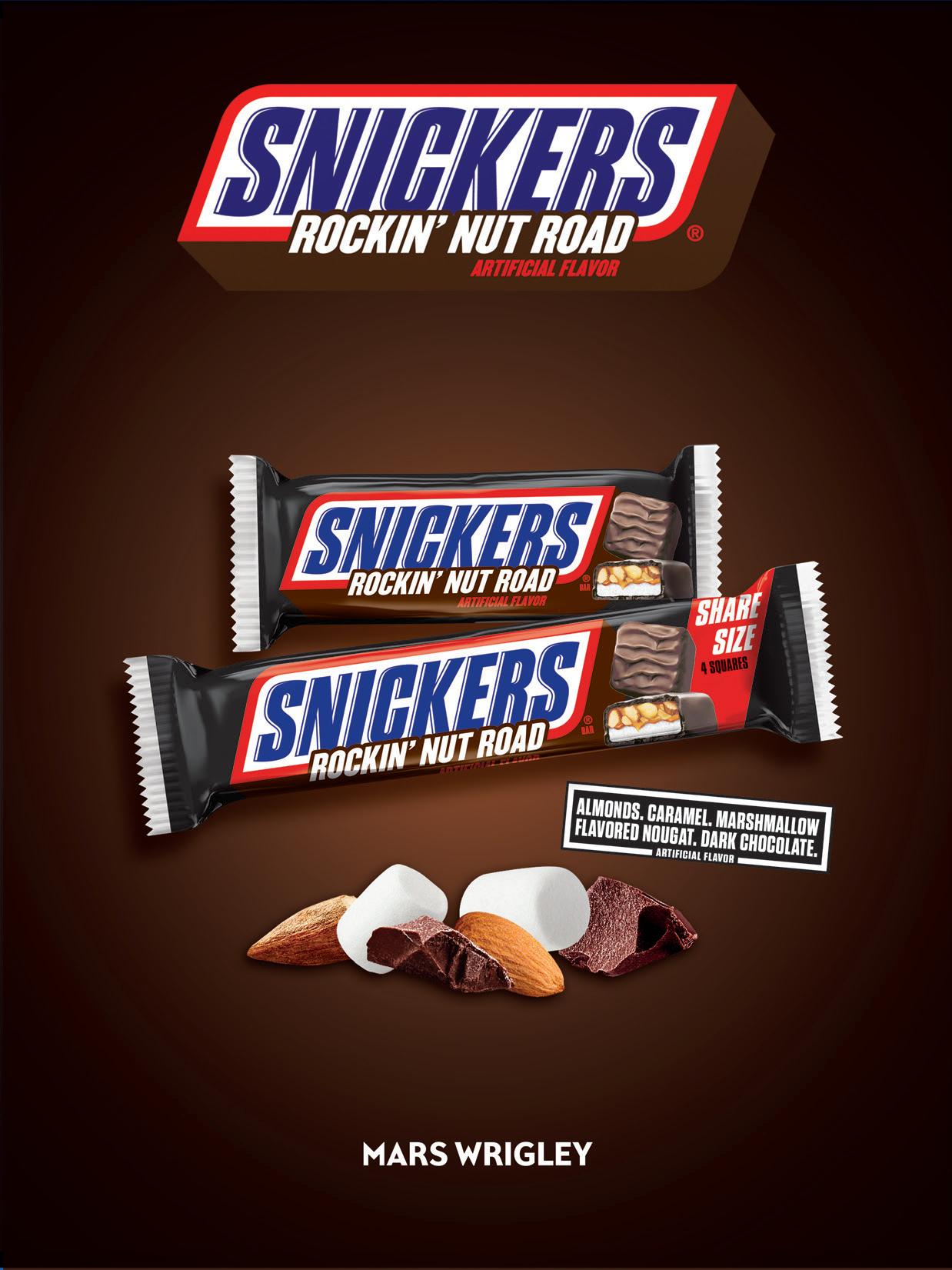

















































































































































































 © Seaboard Foods 2023
© Seaboard Foods 2023

























 By Gina Acosta
By Gina Acosta









































































































































































